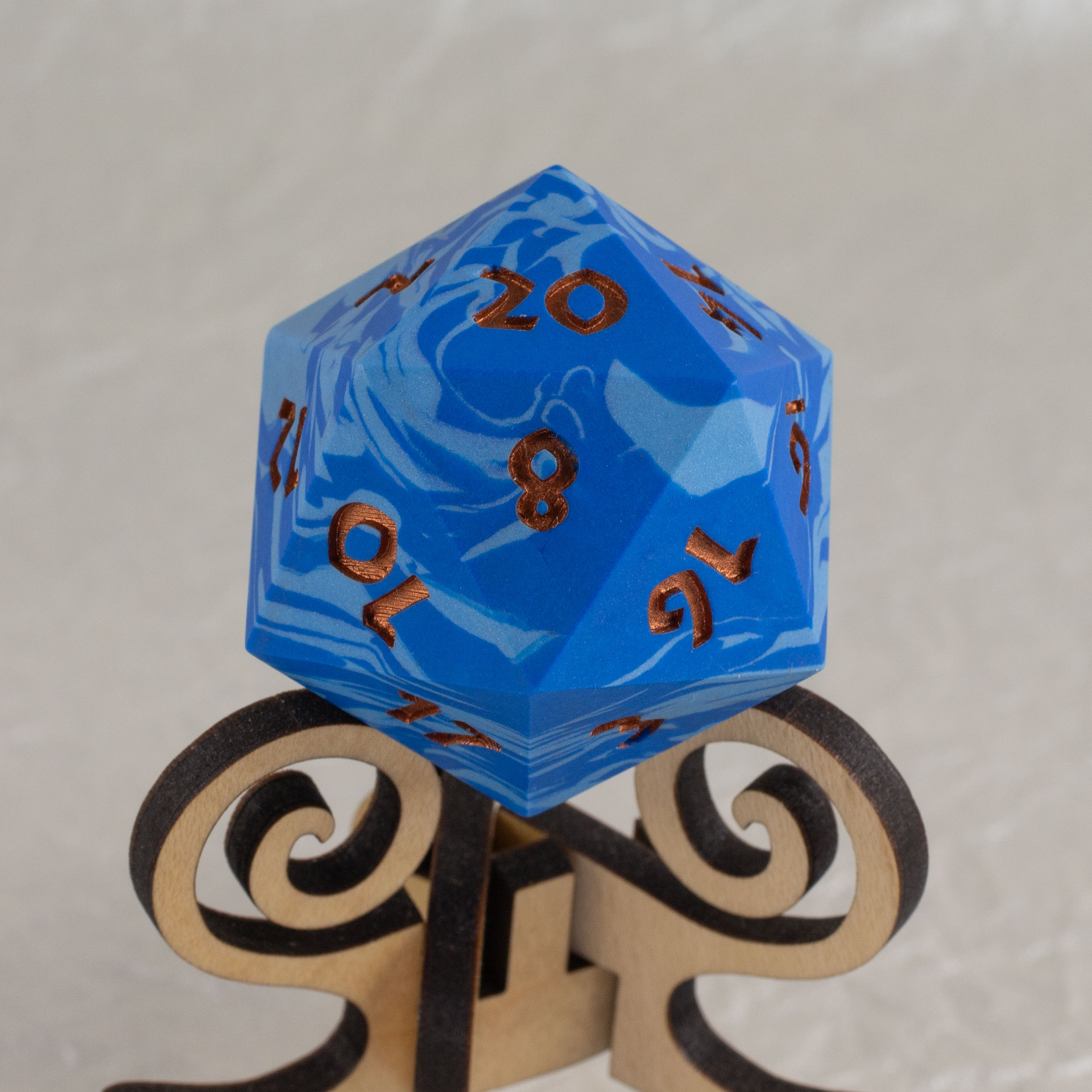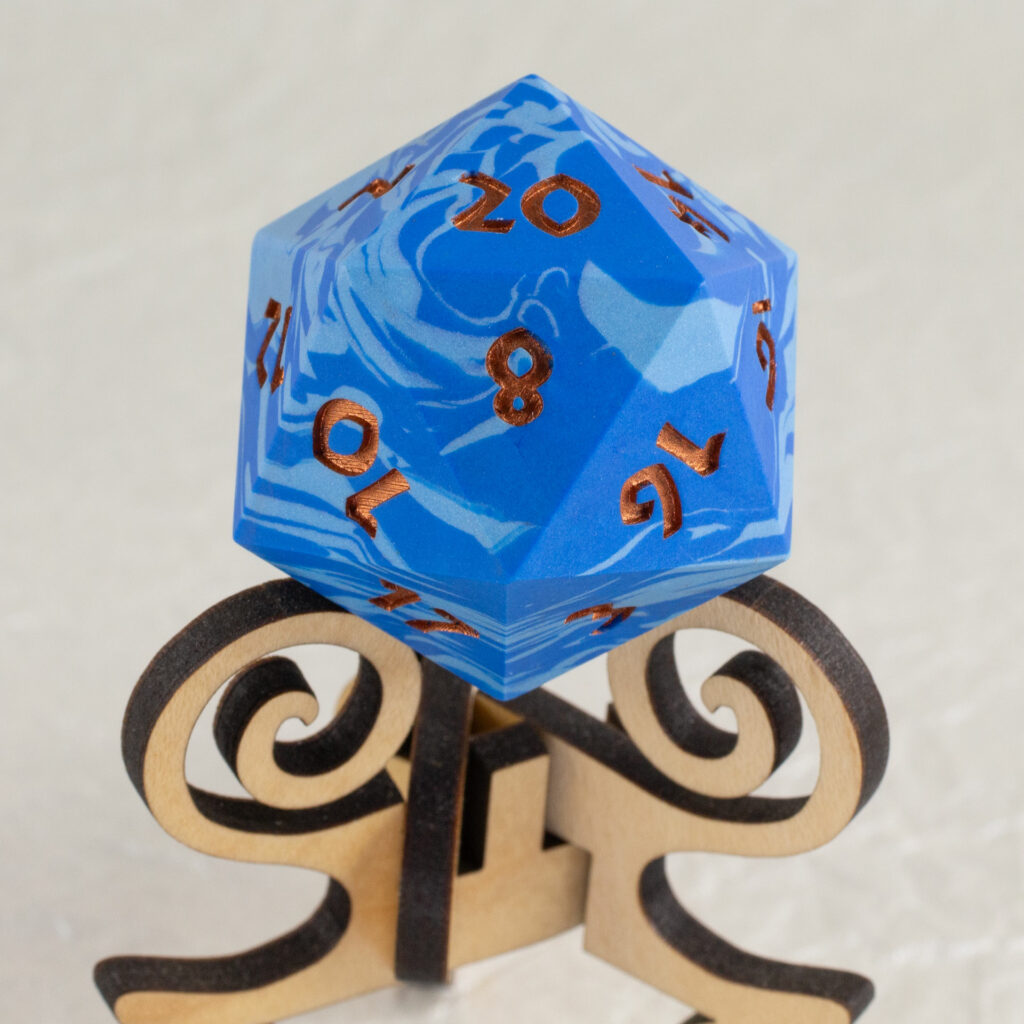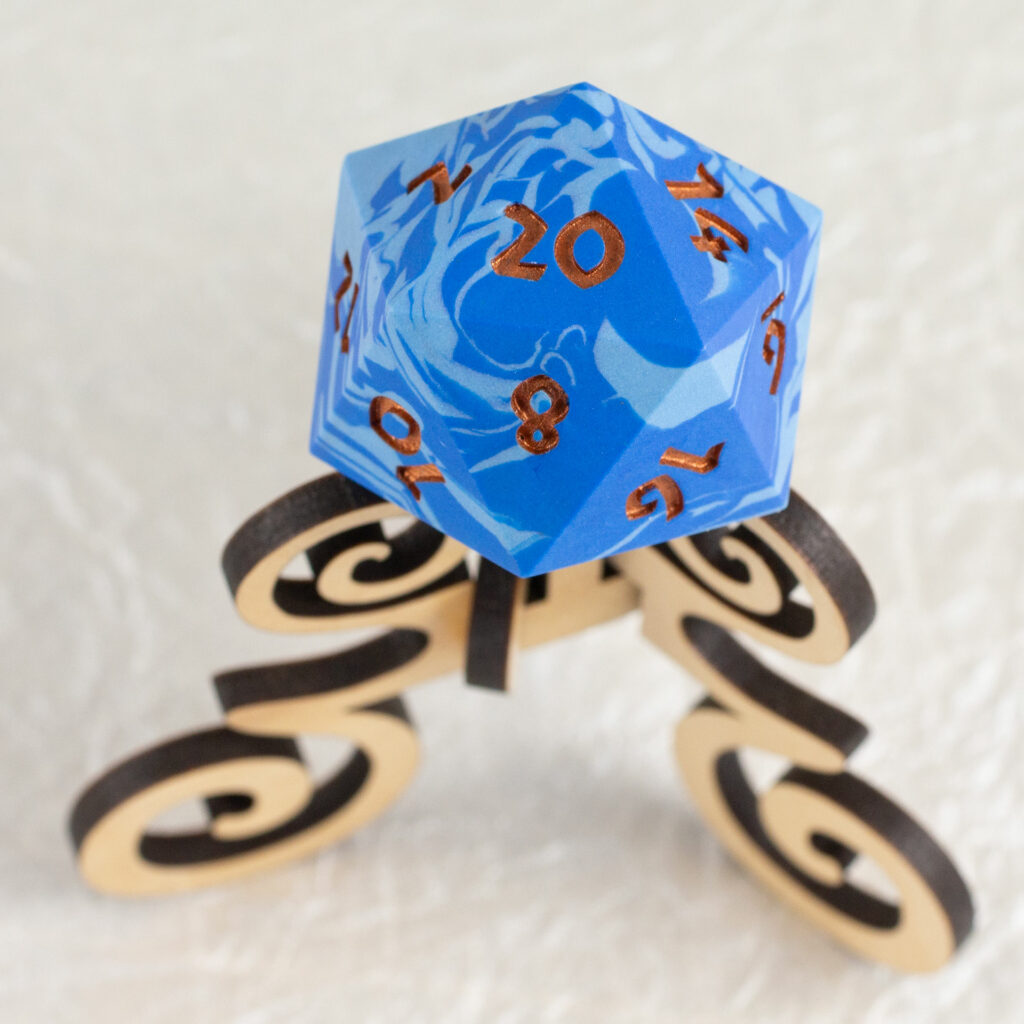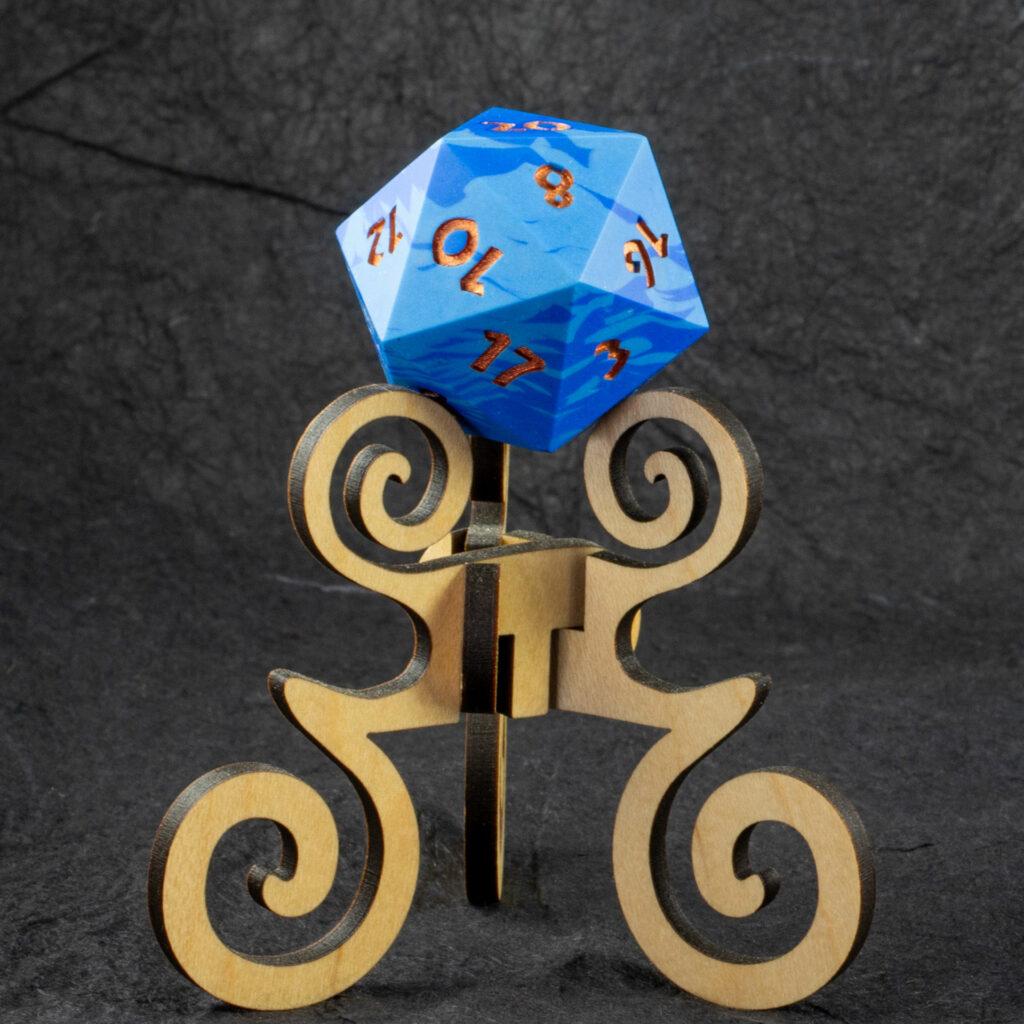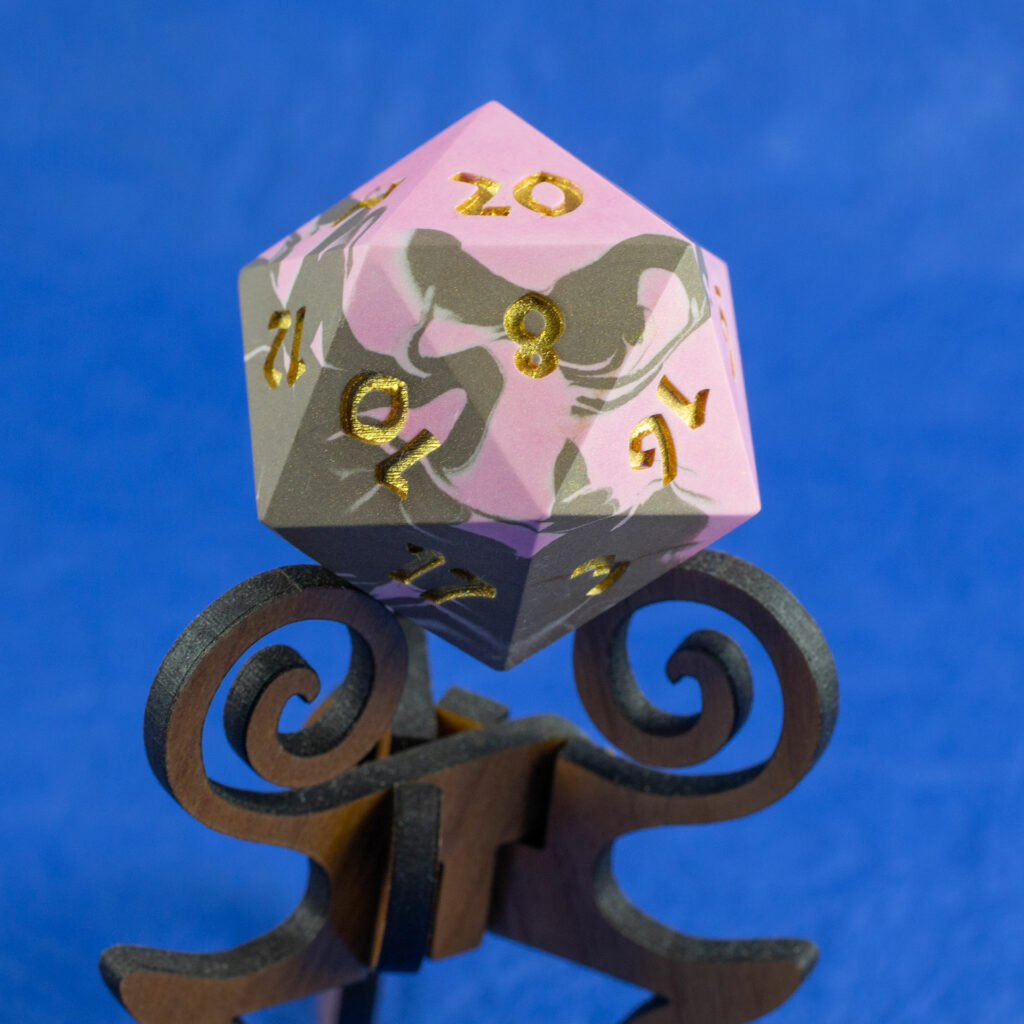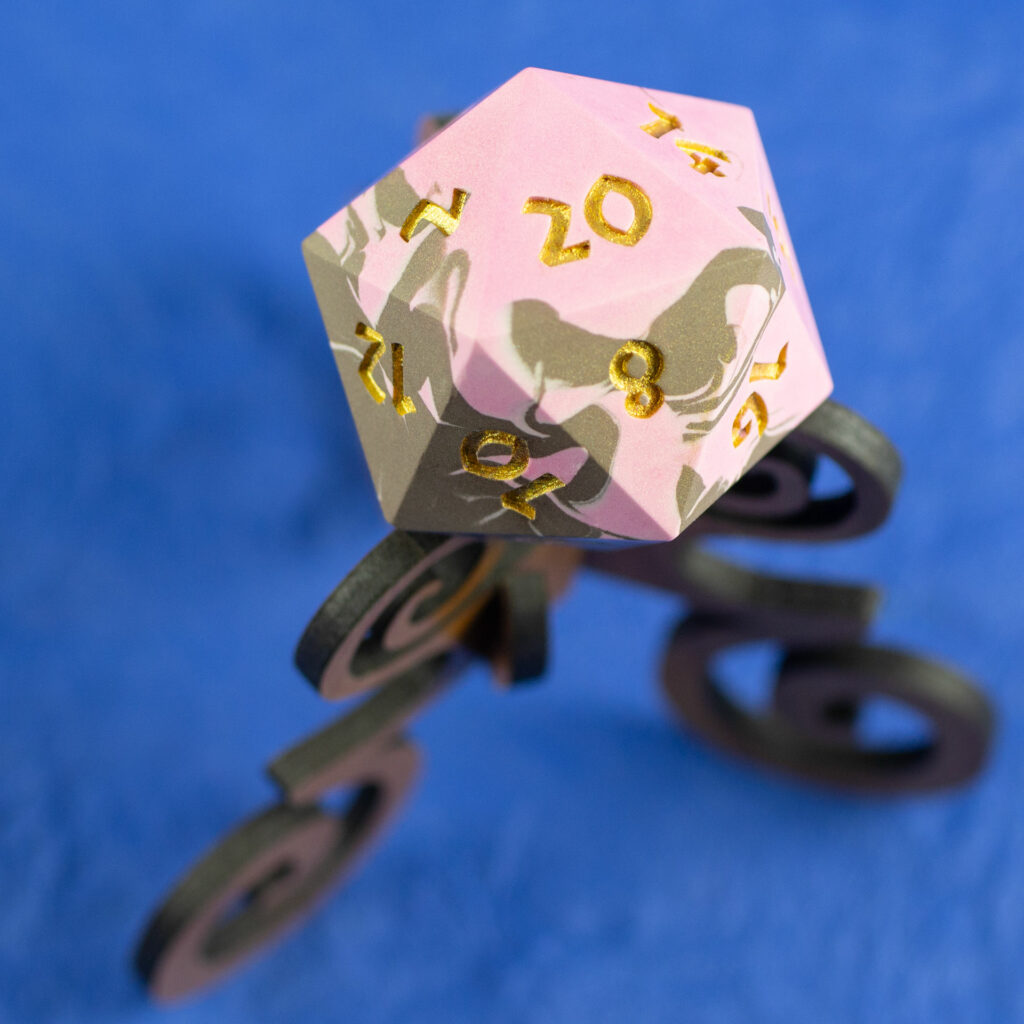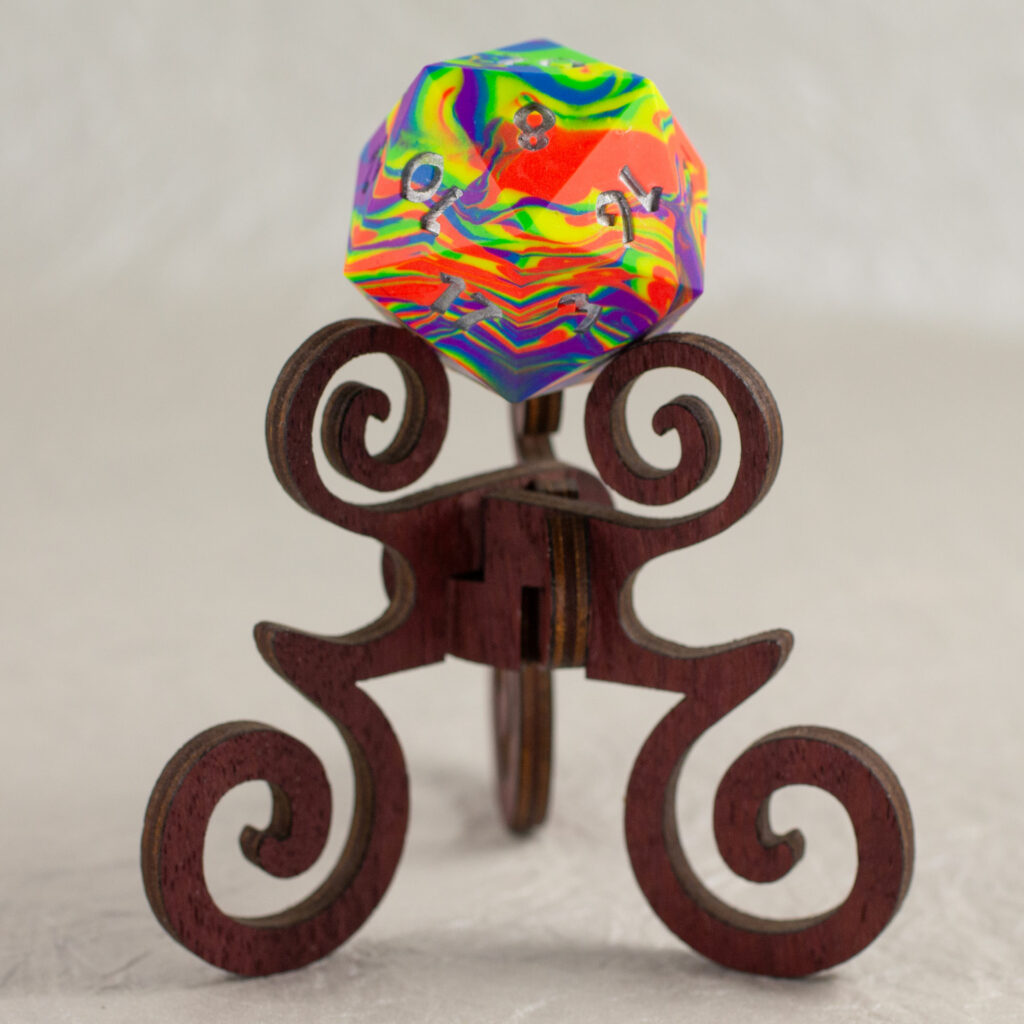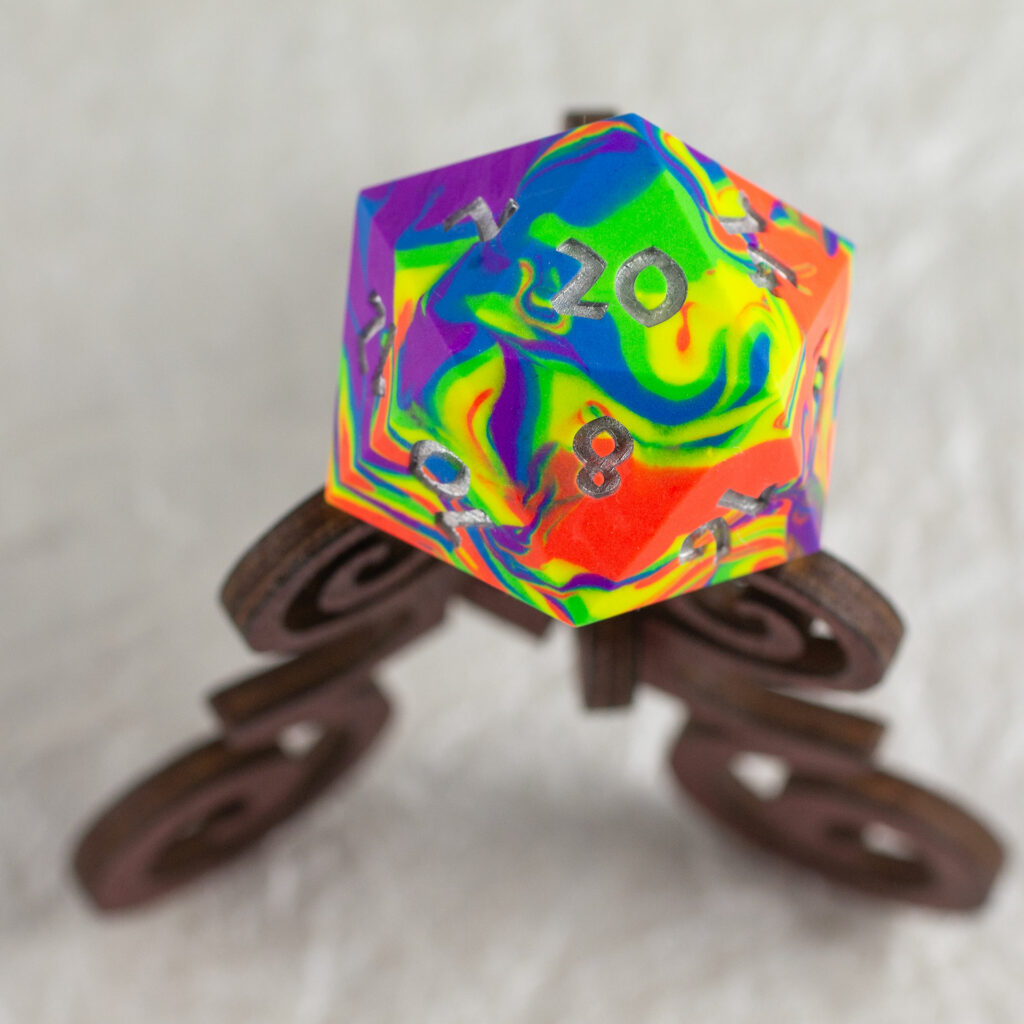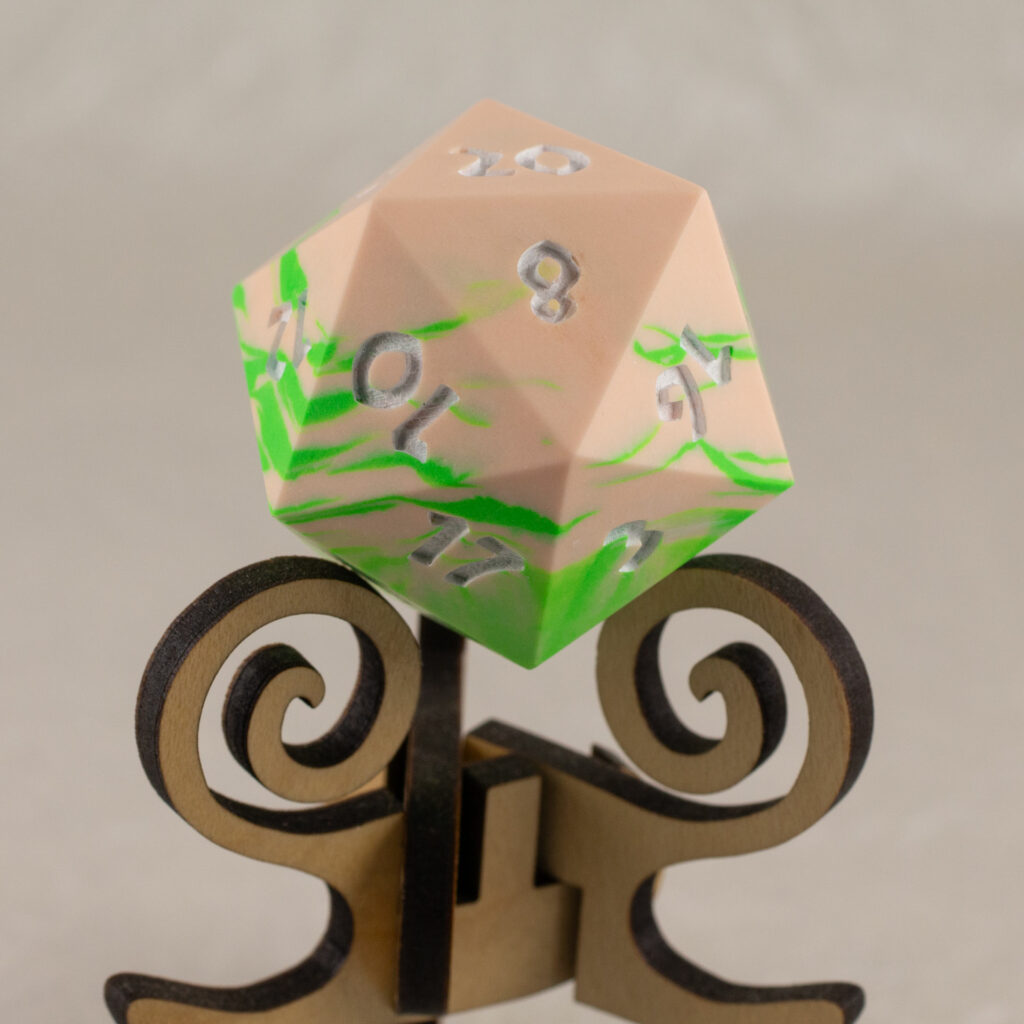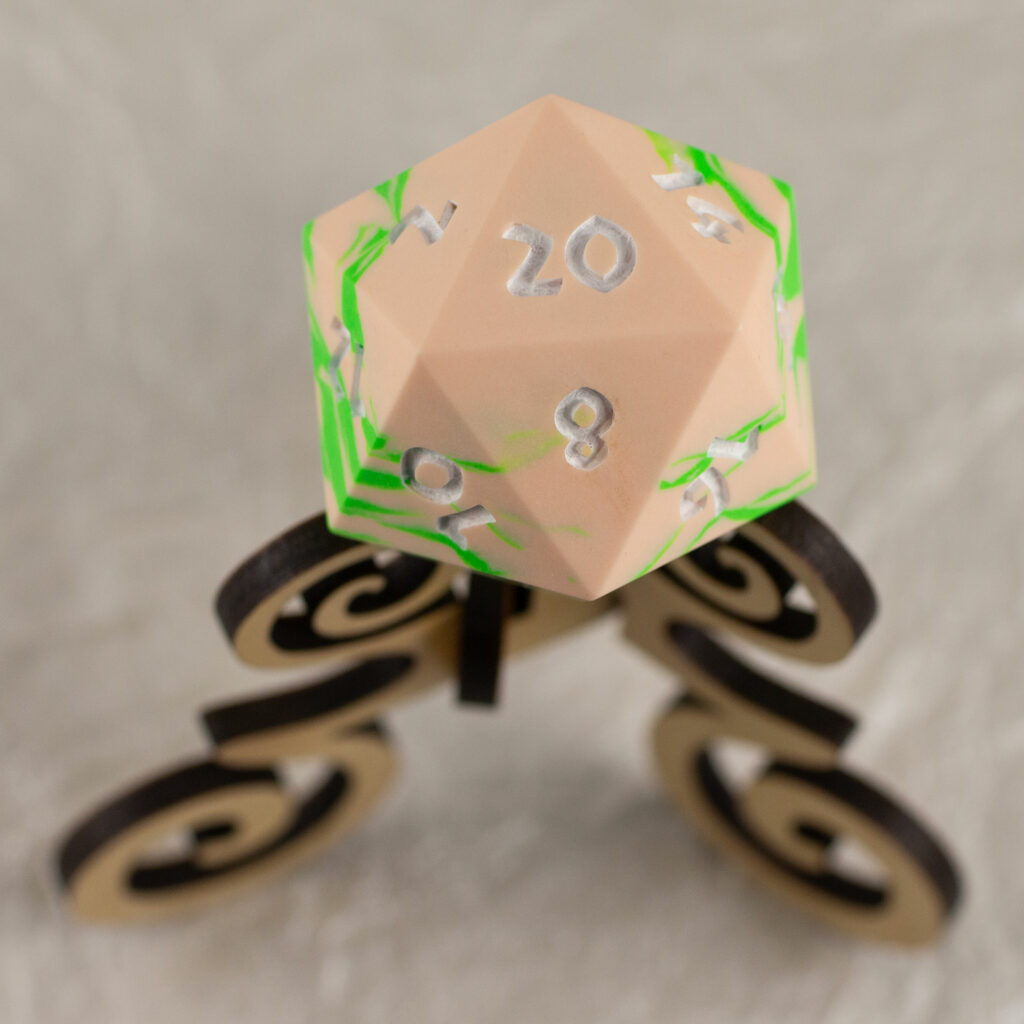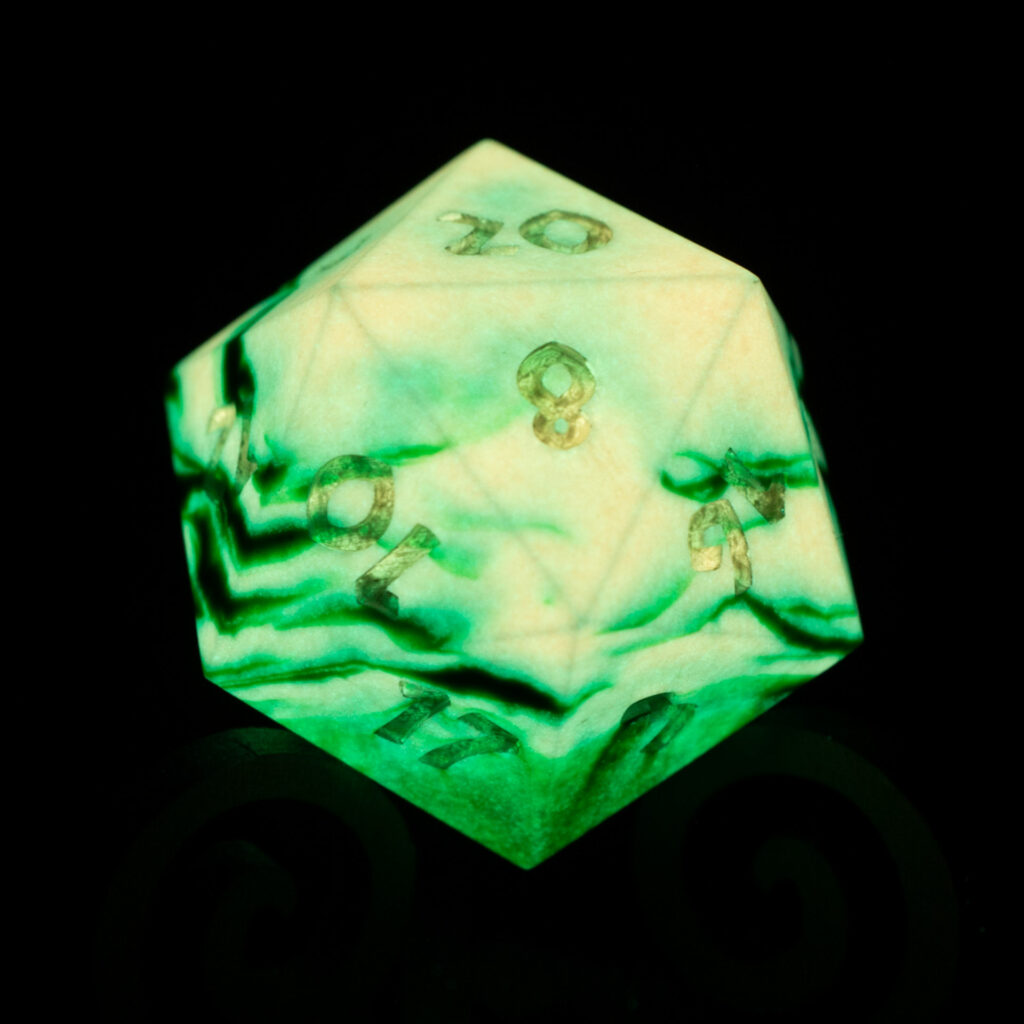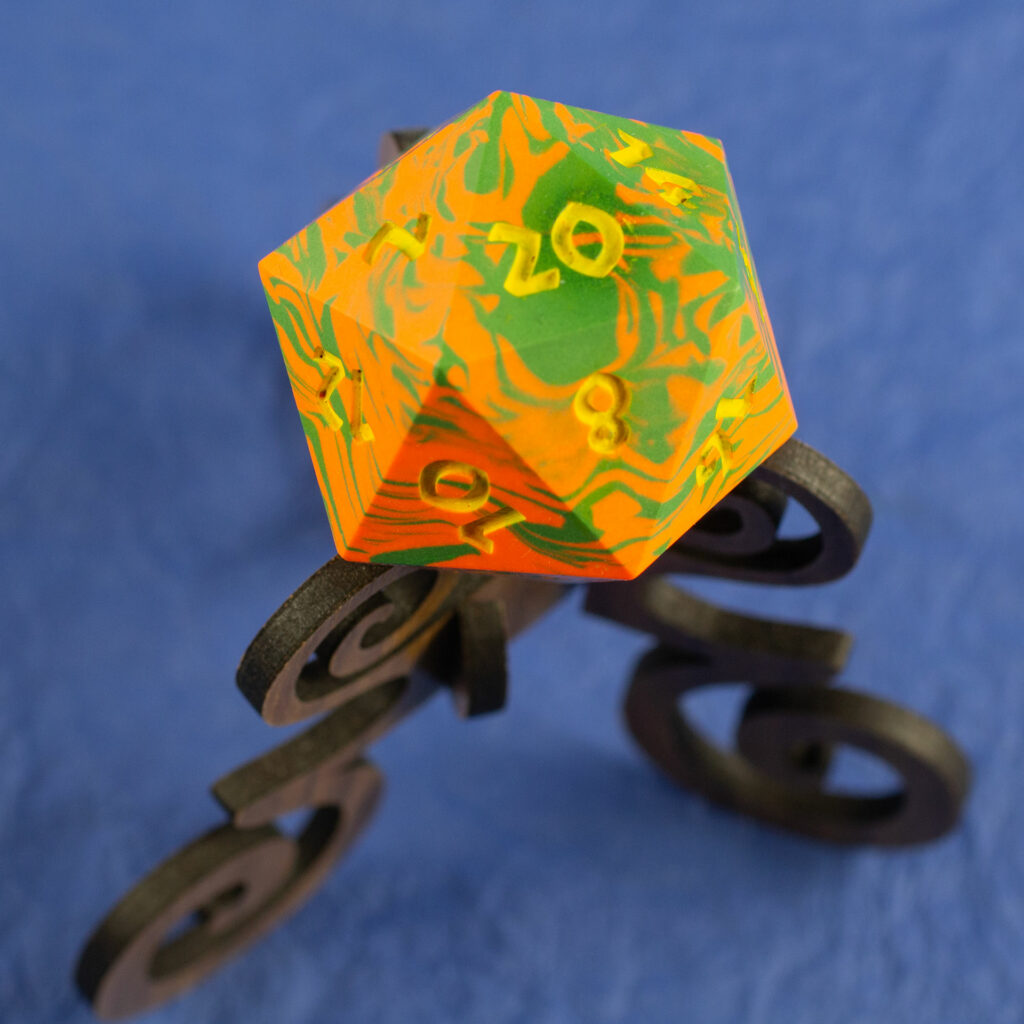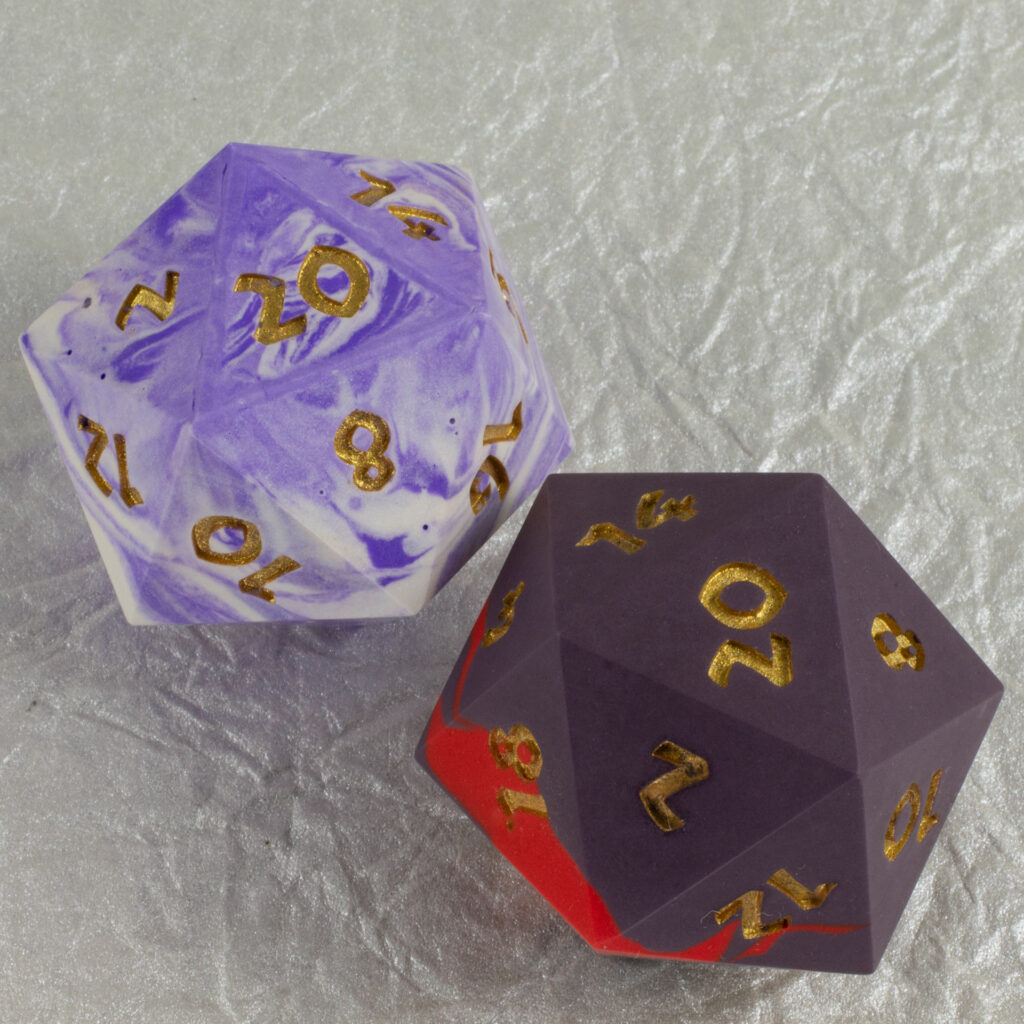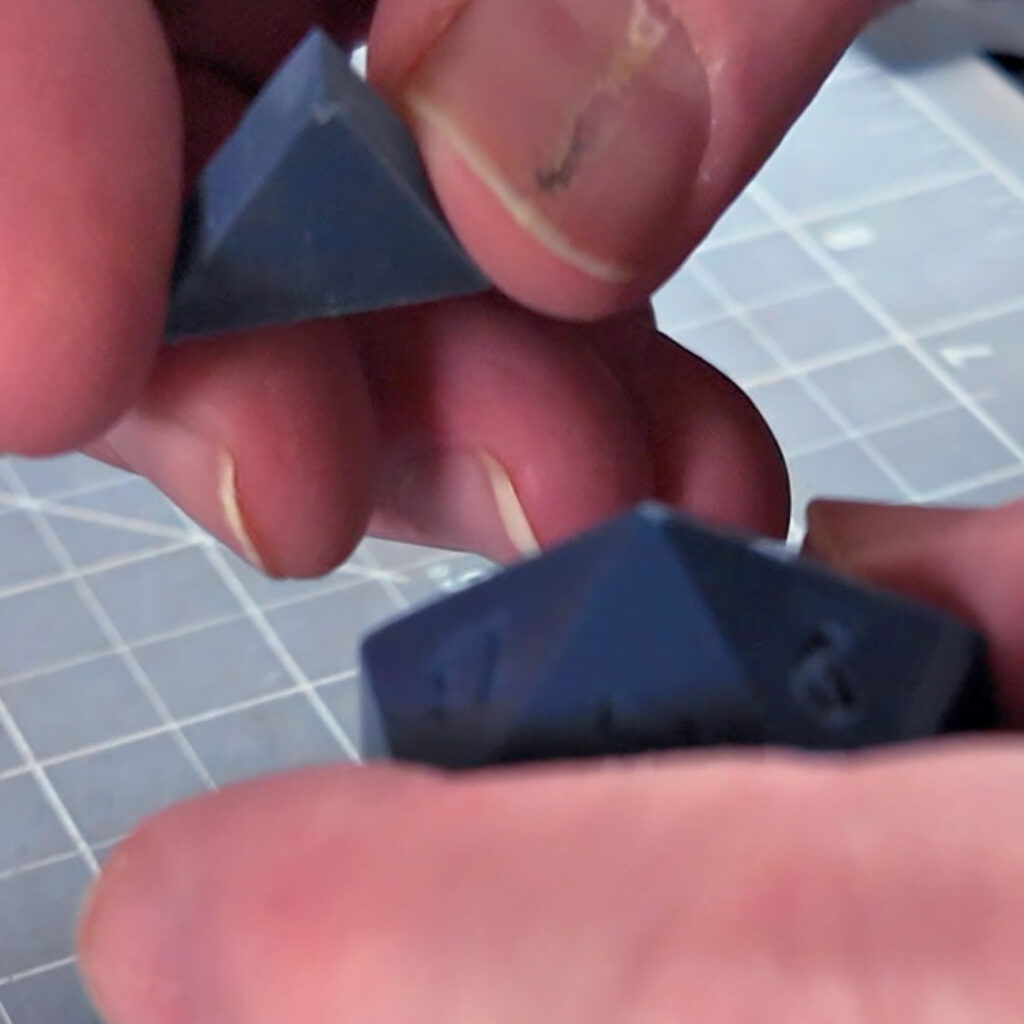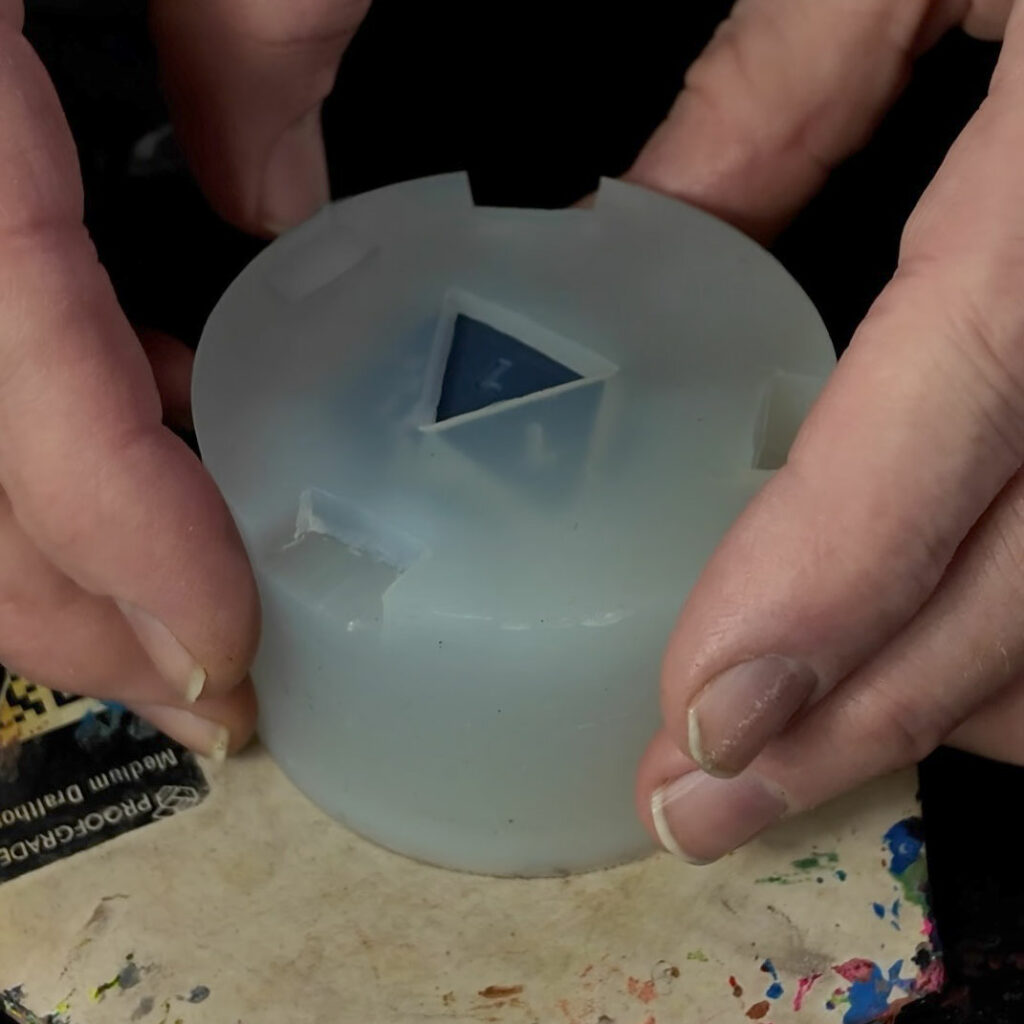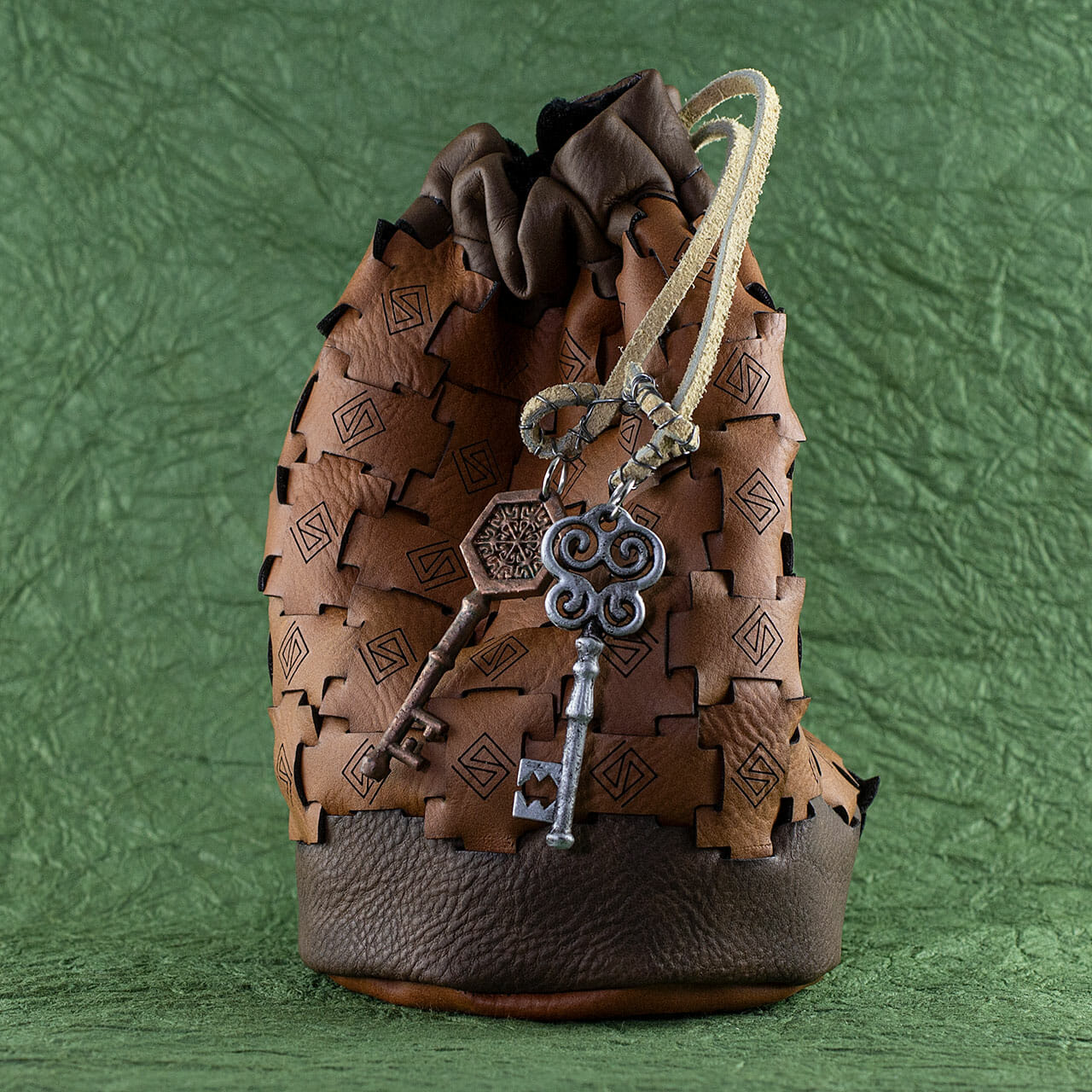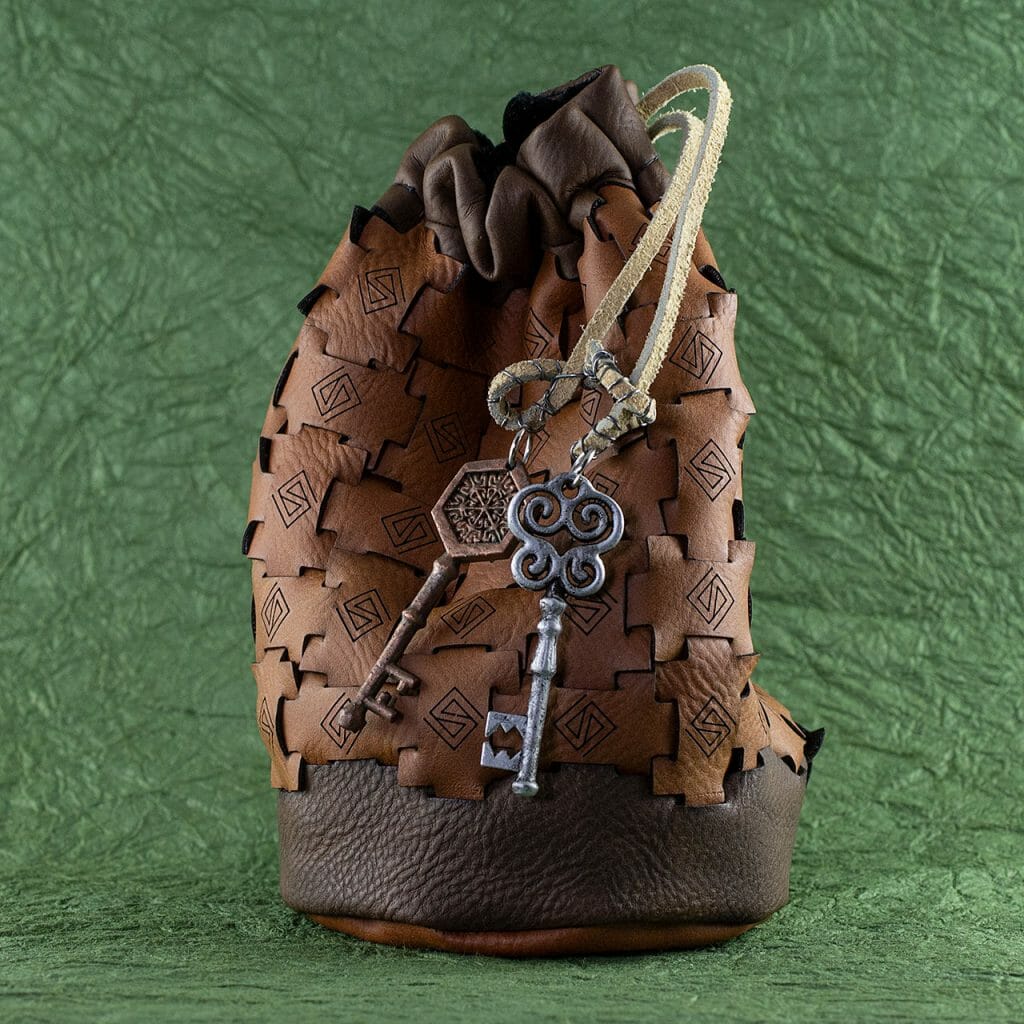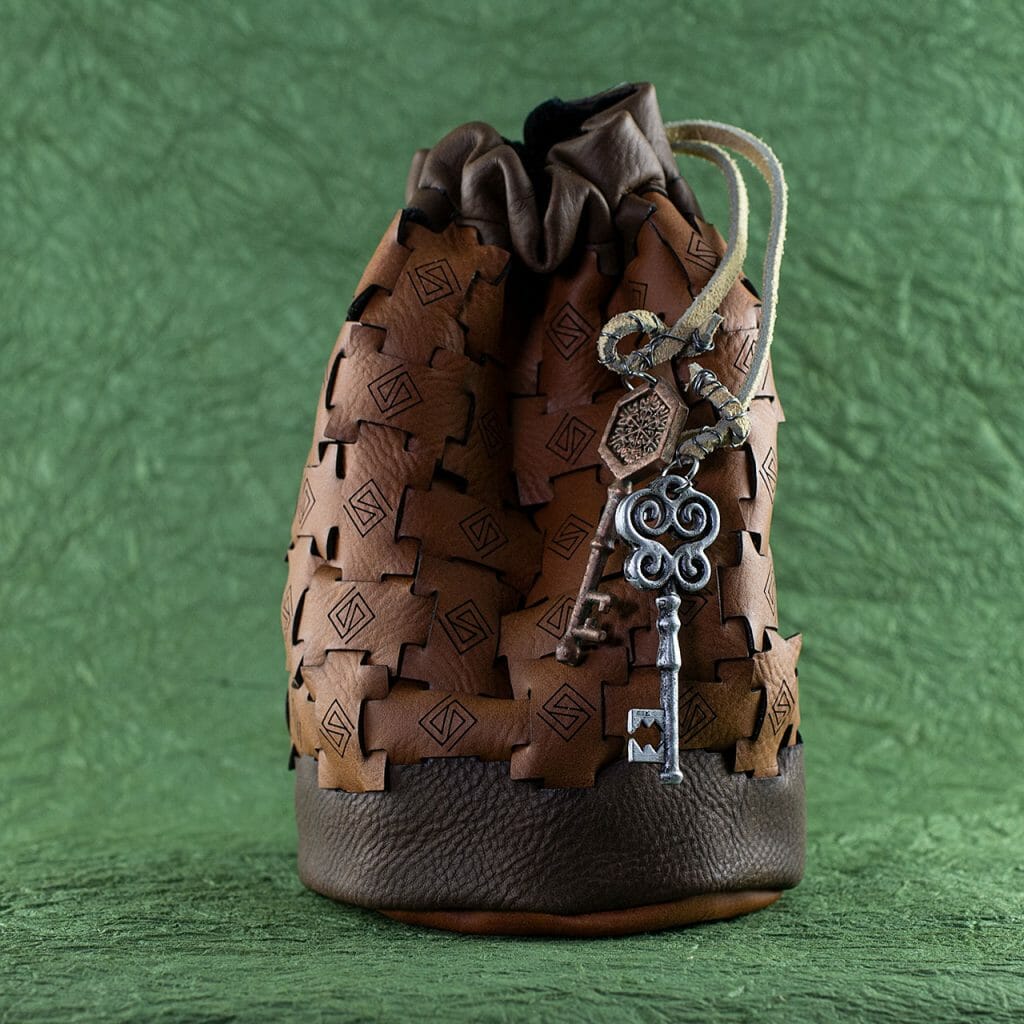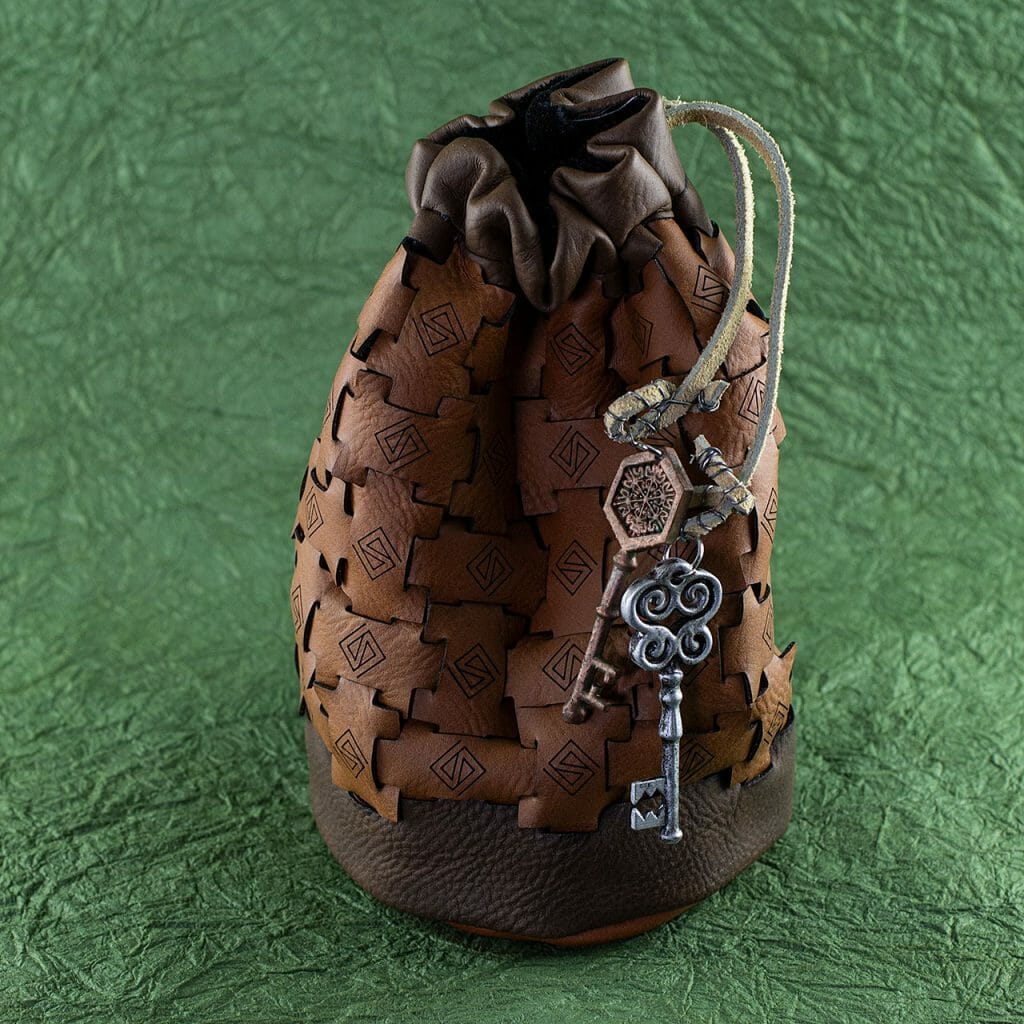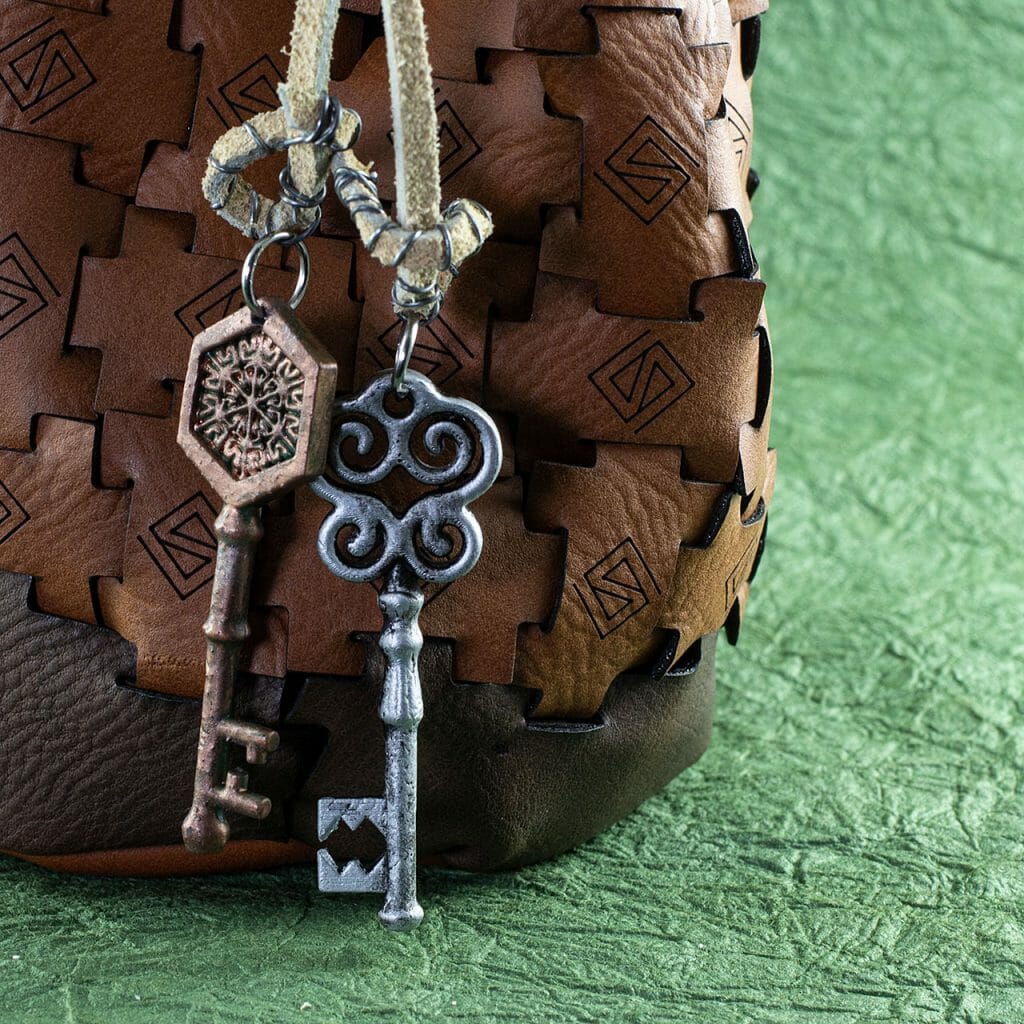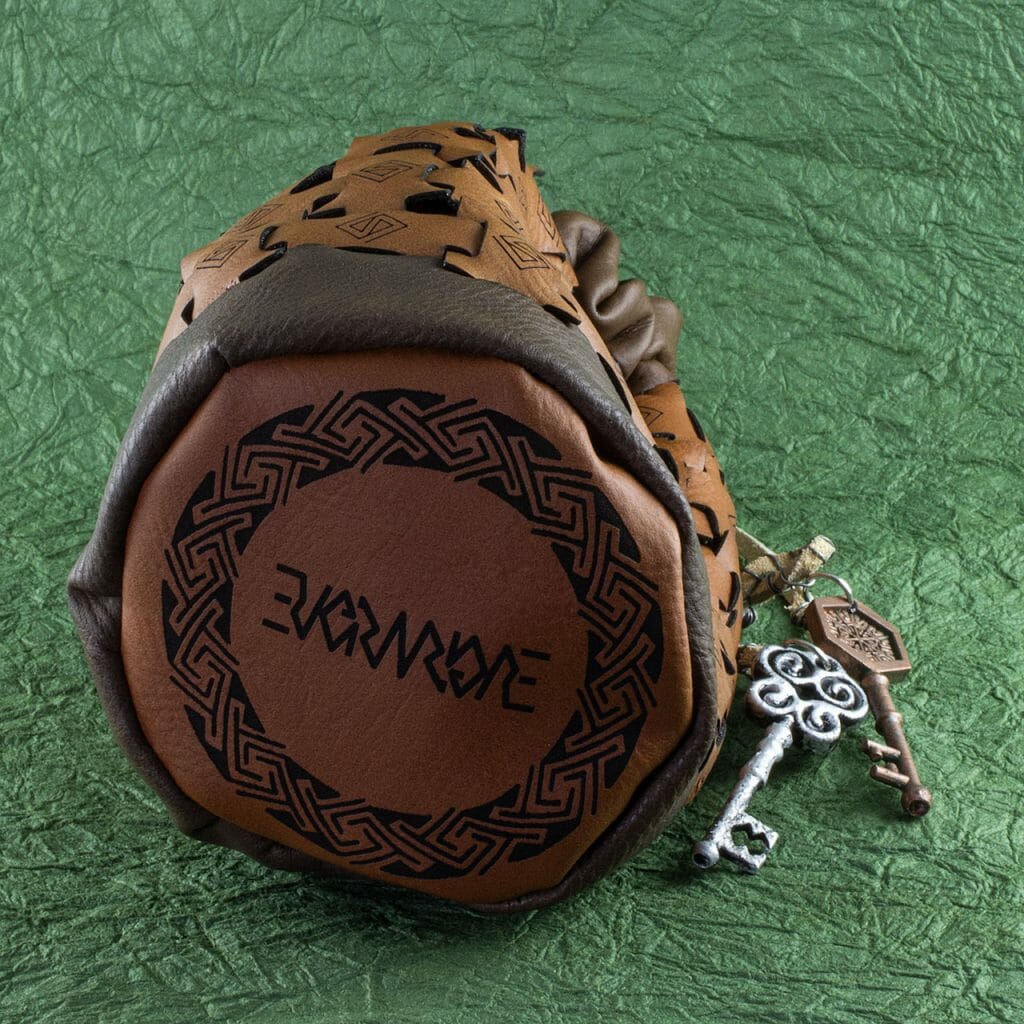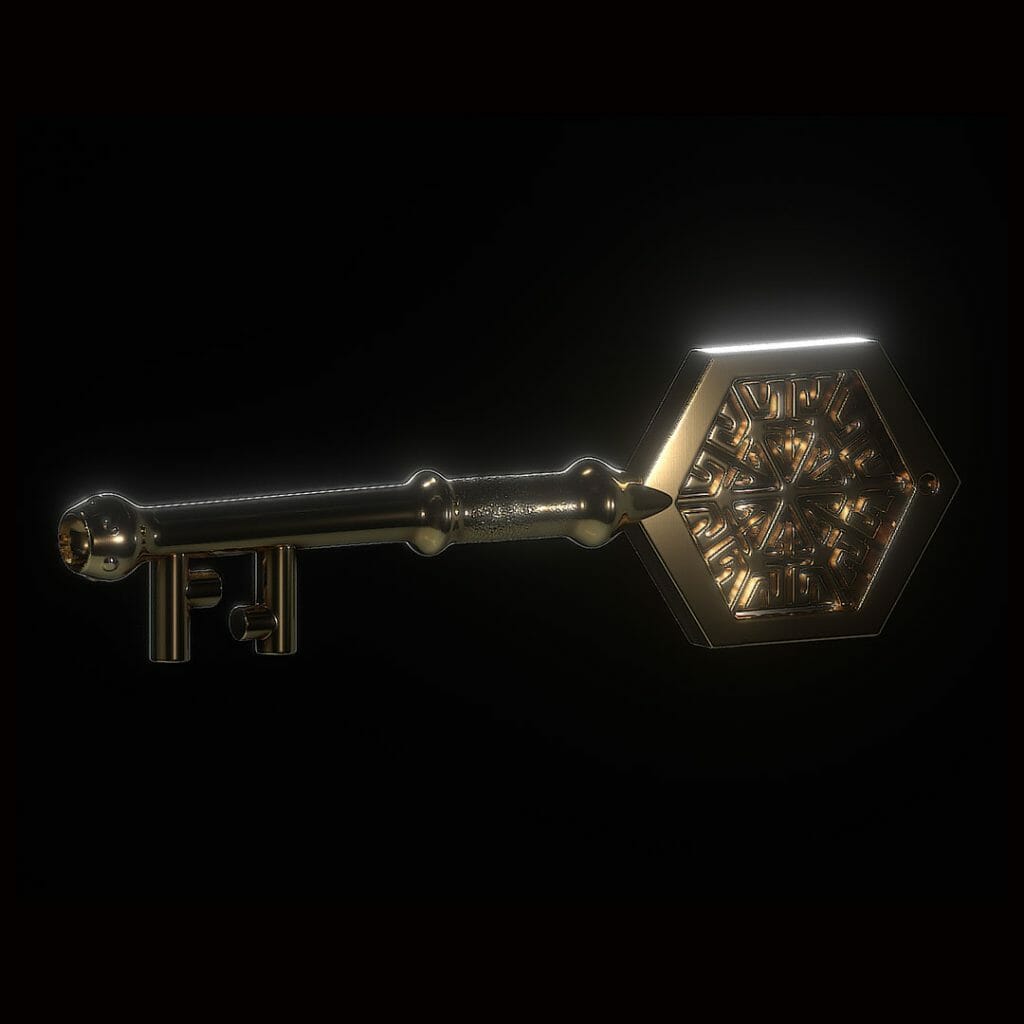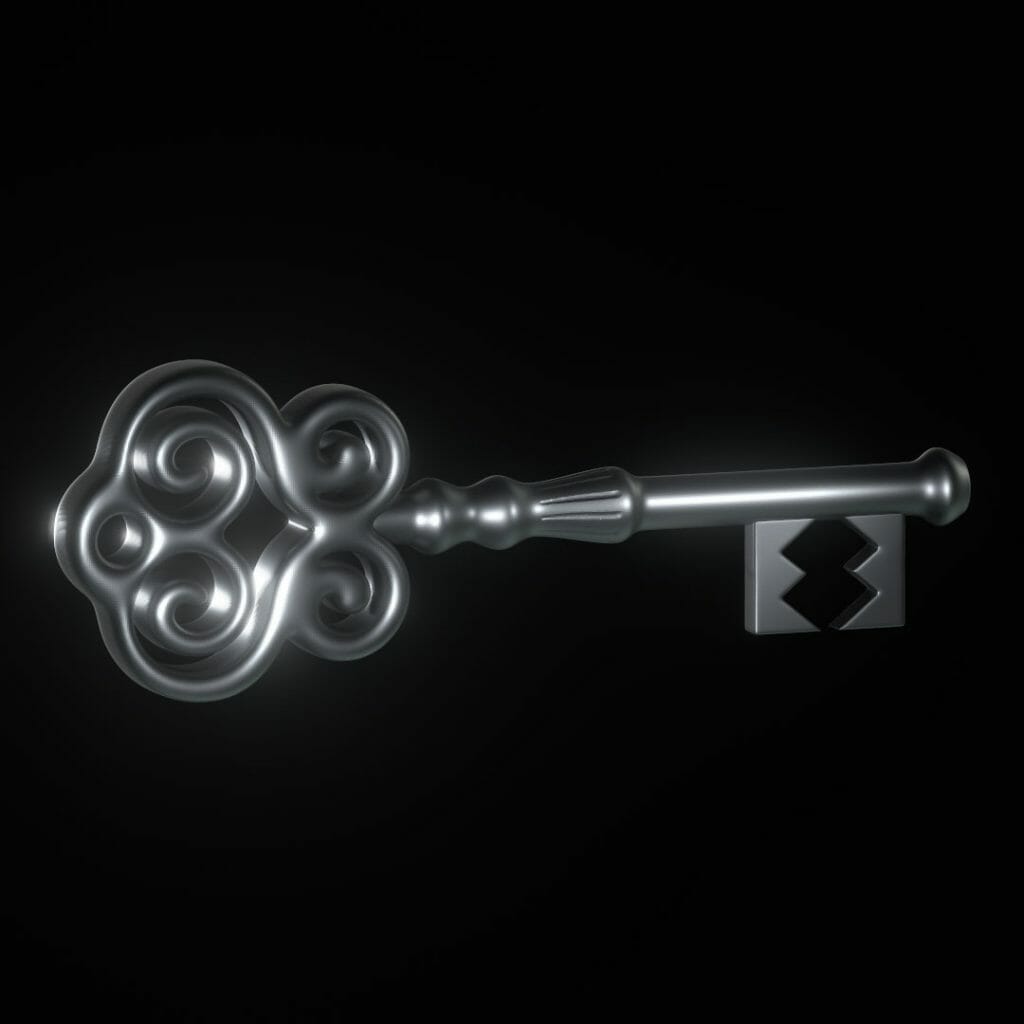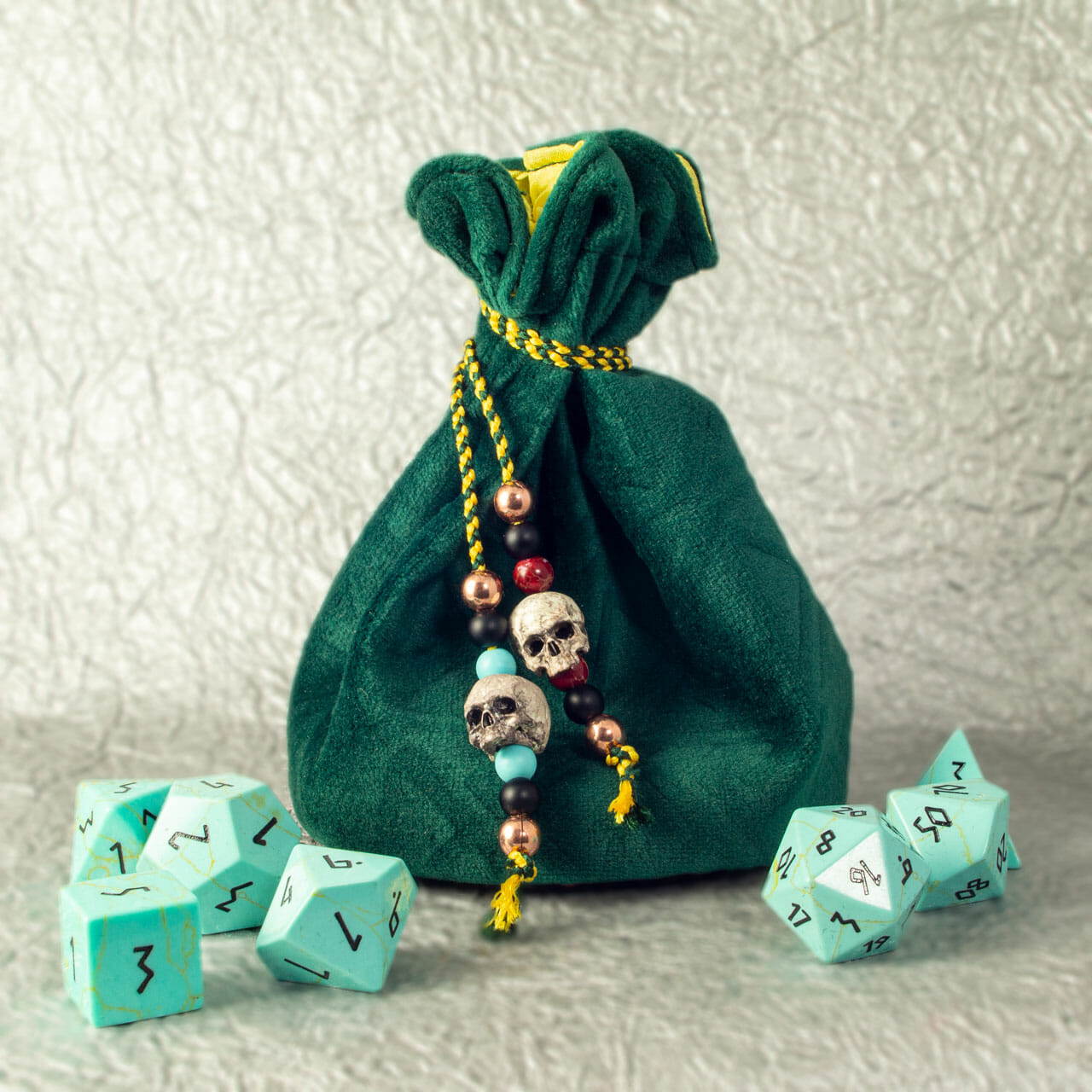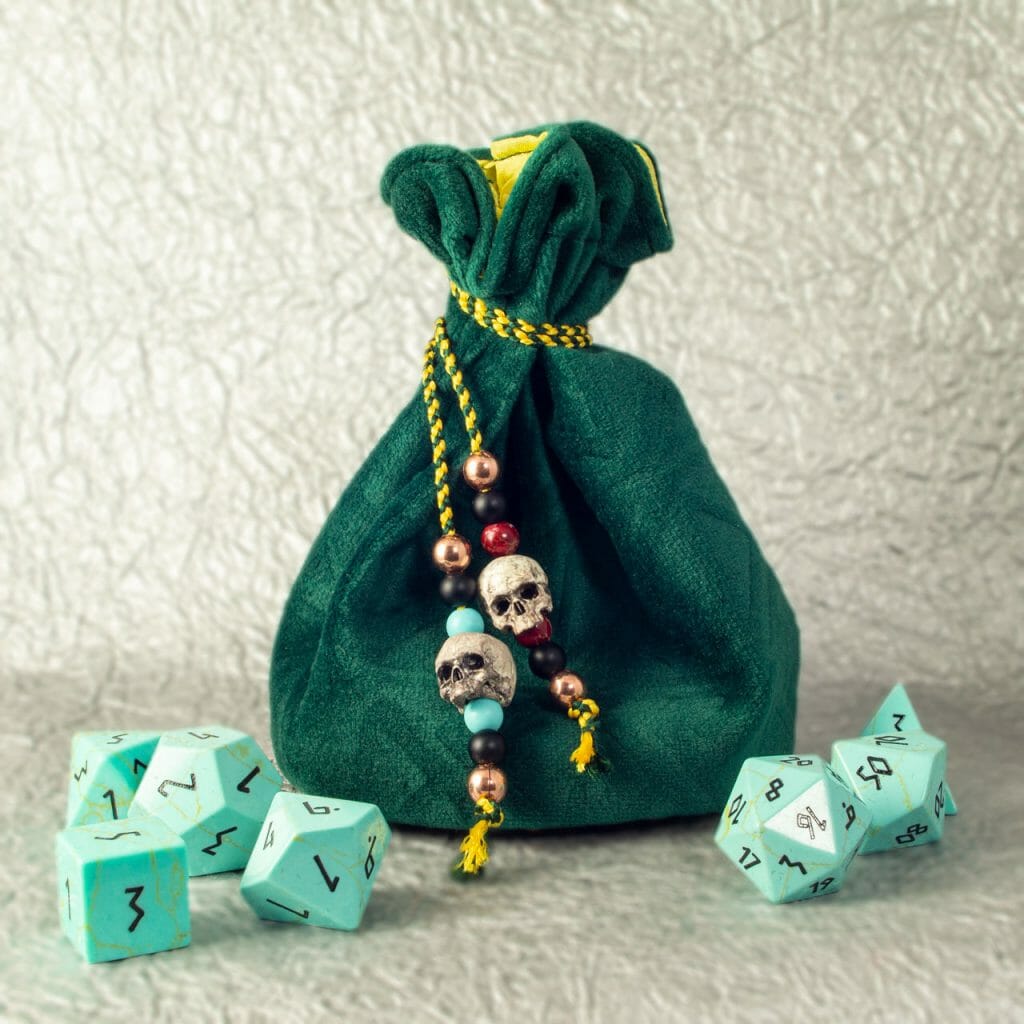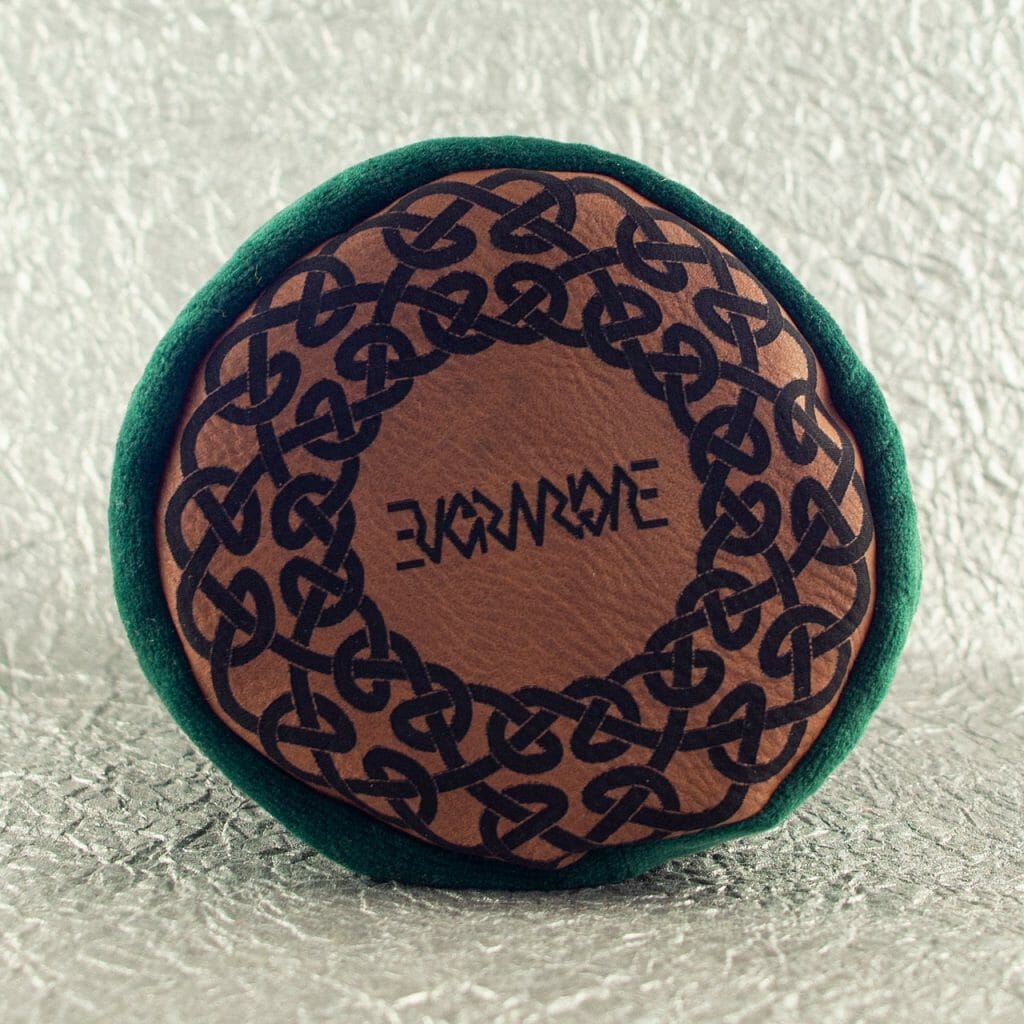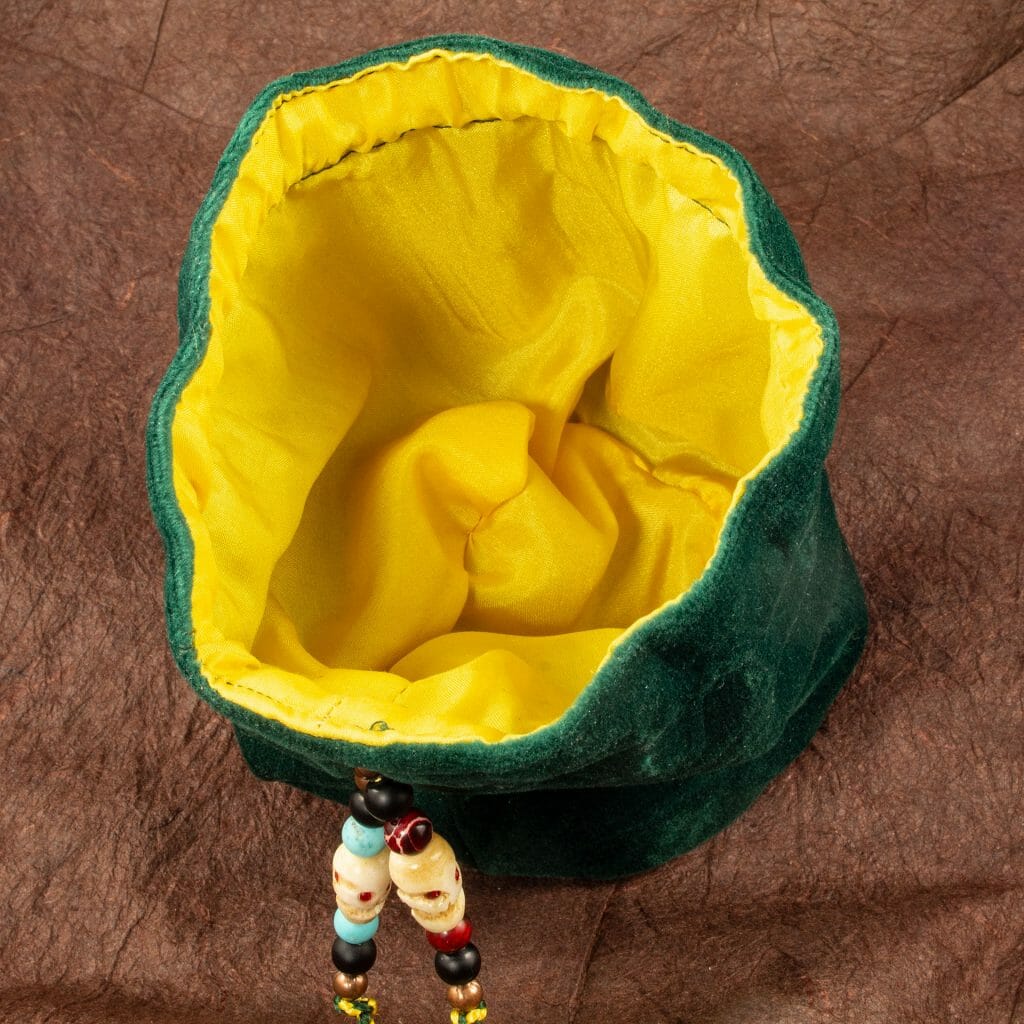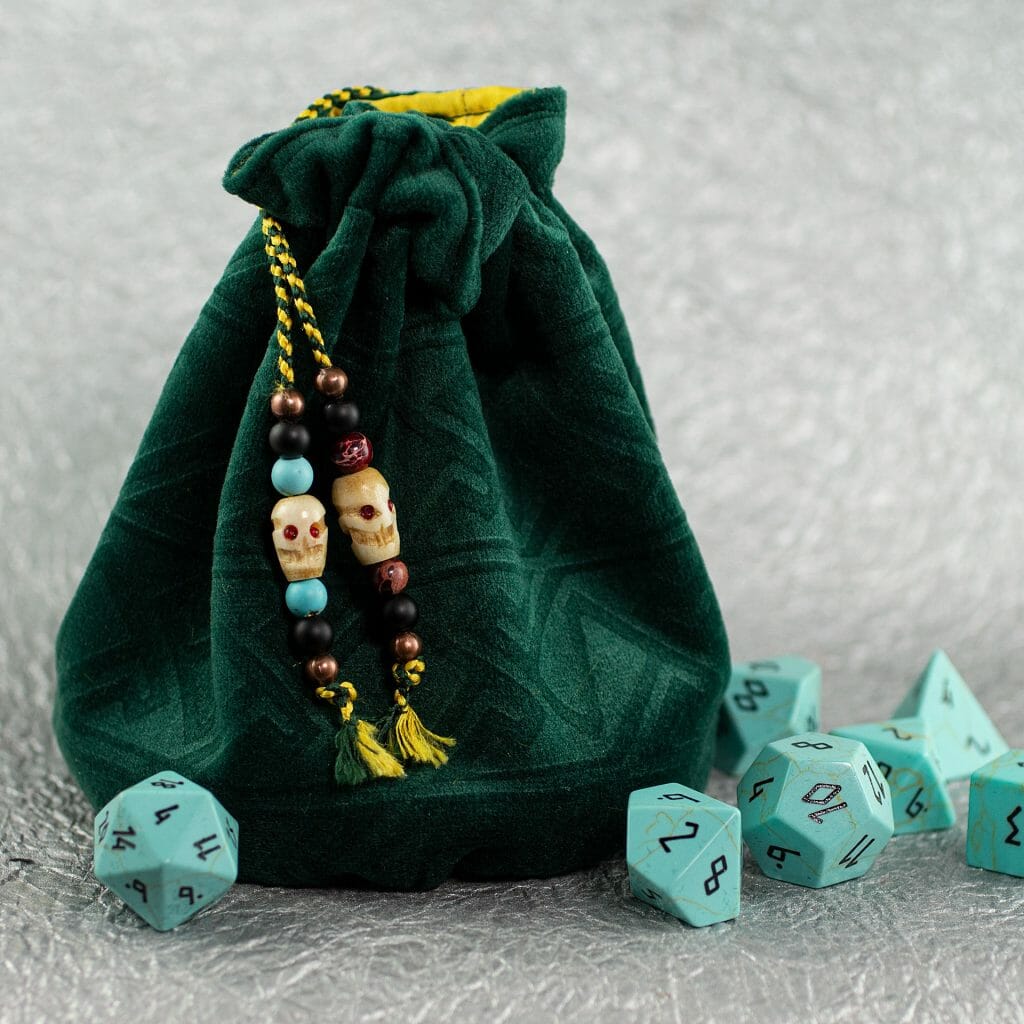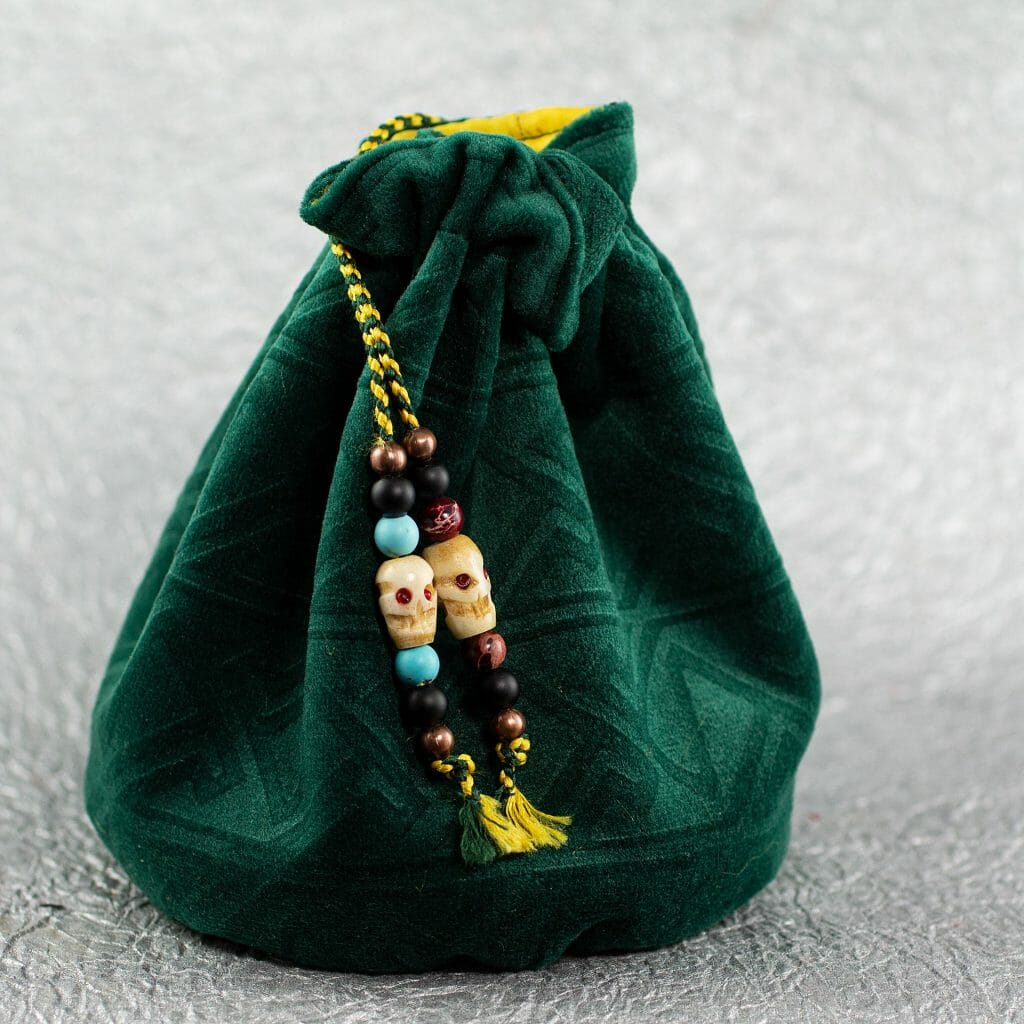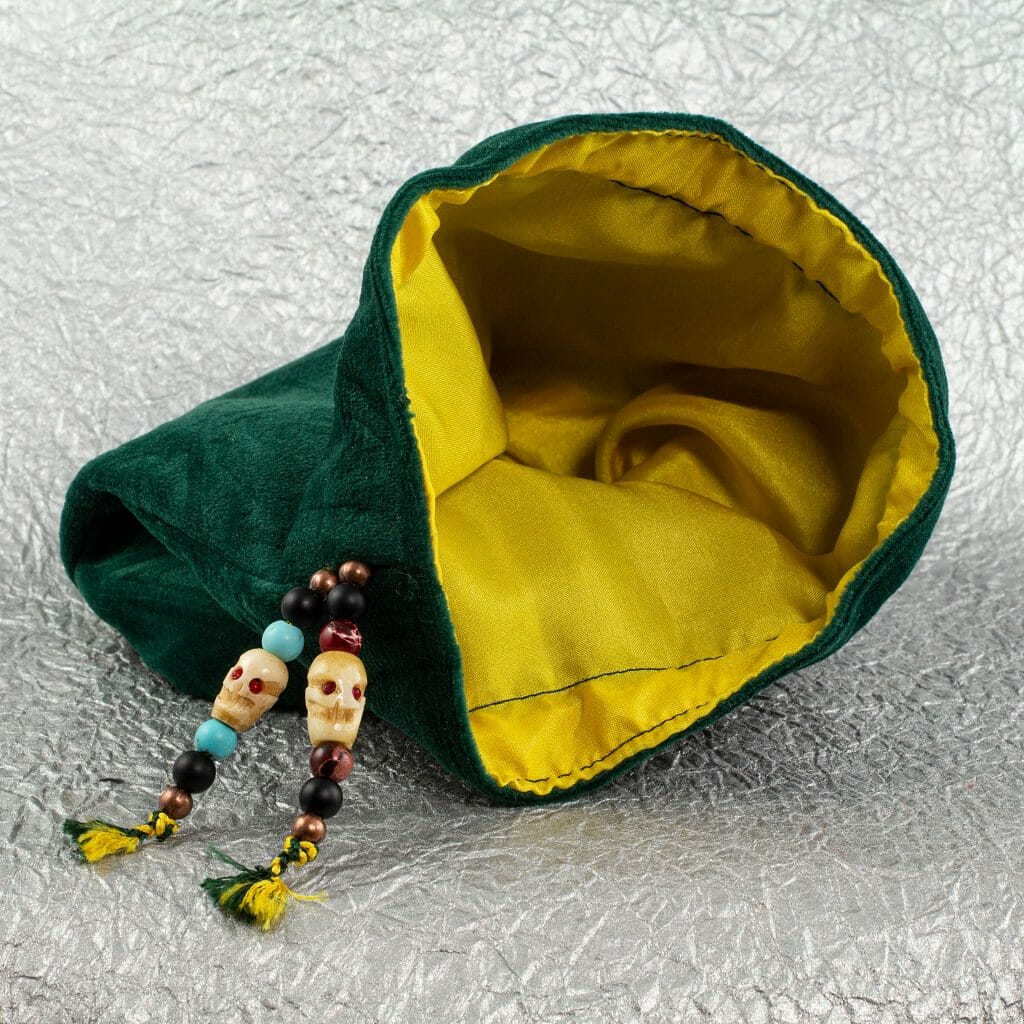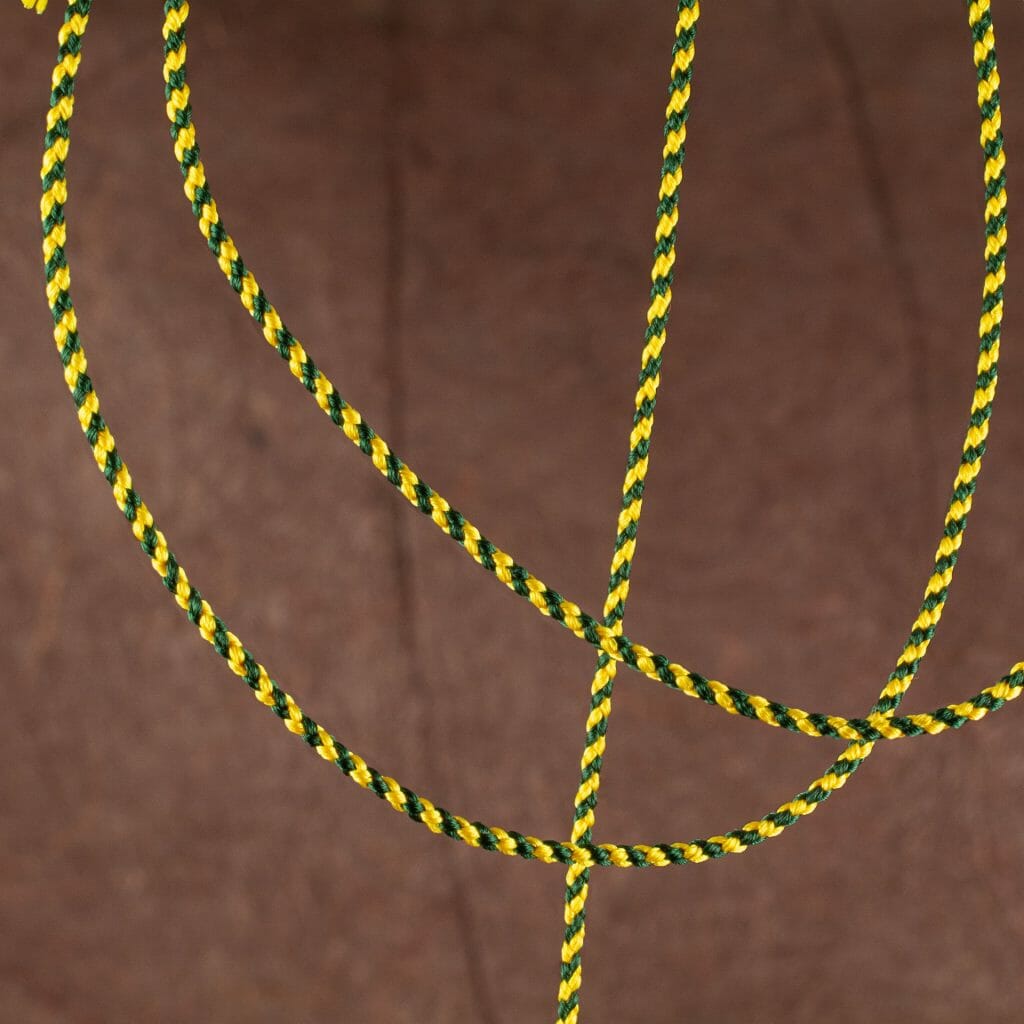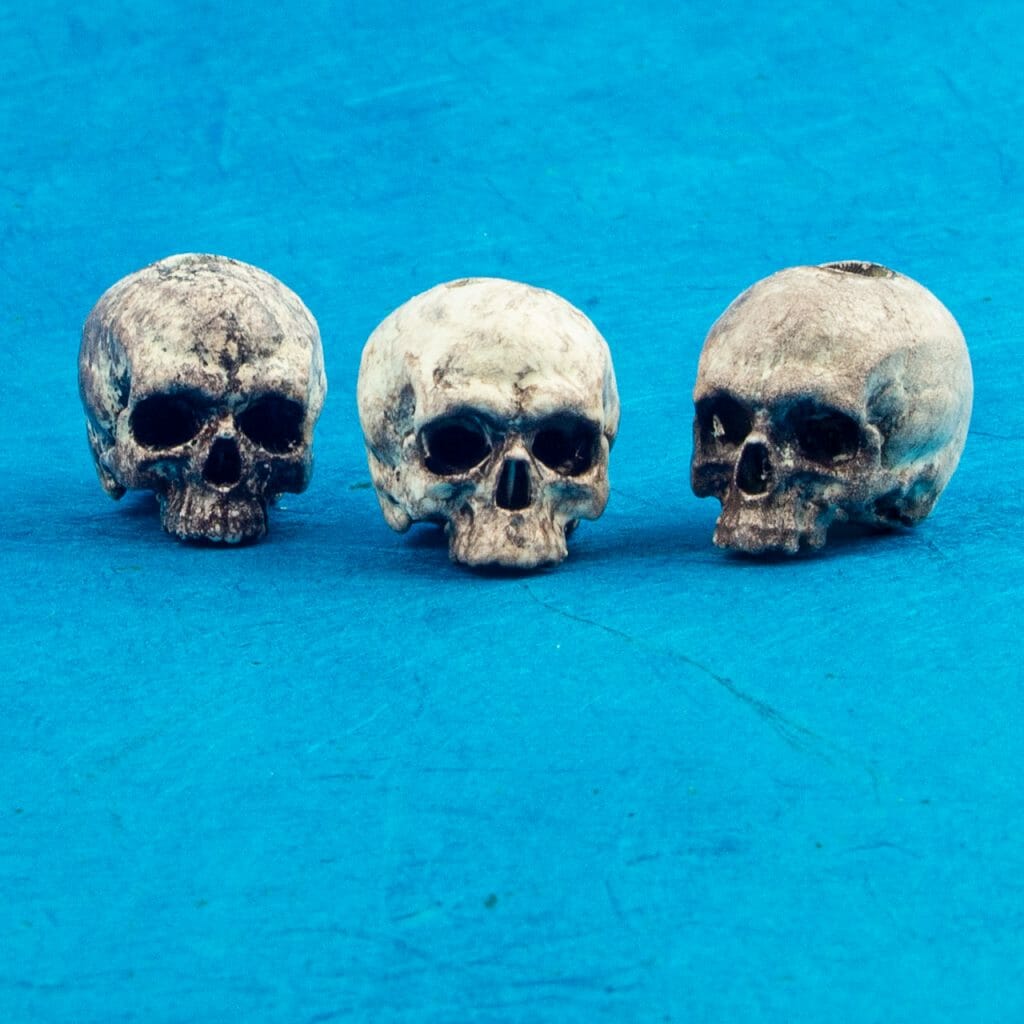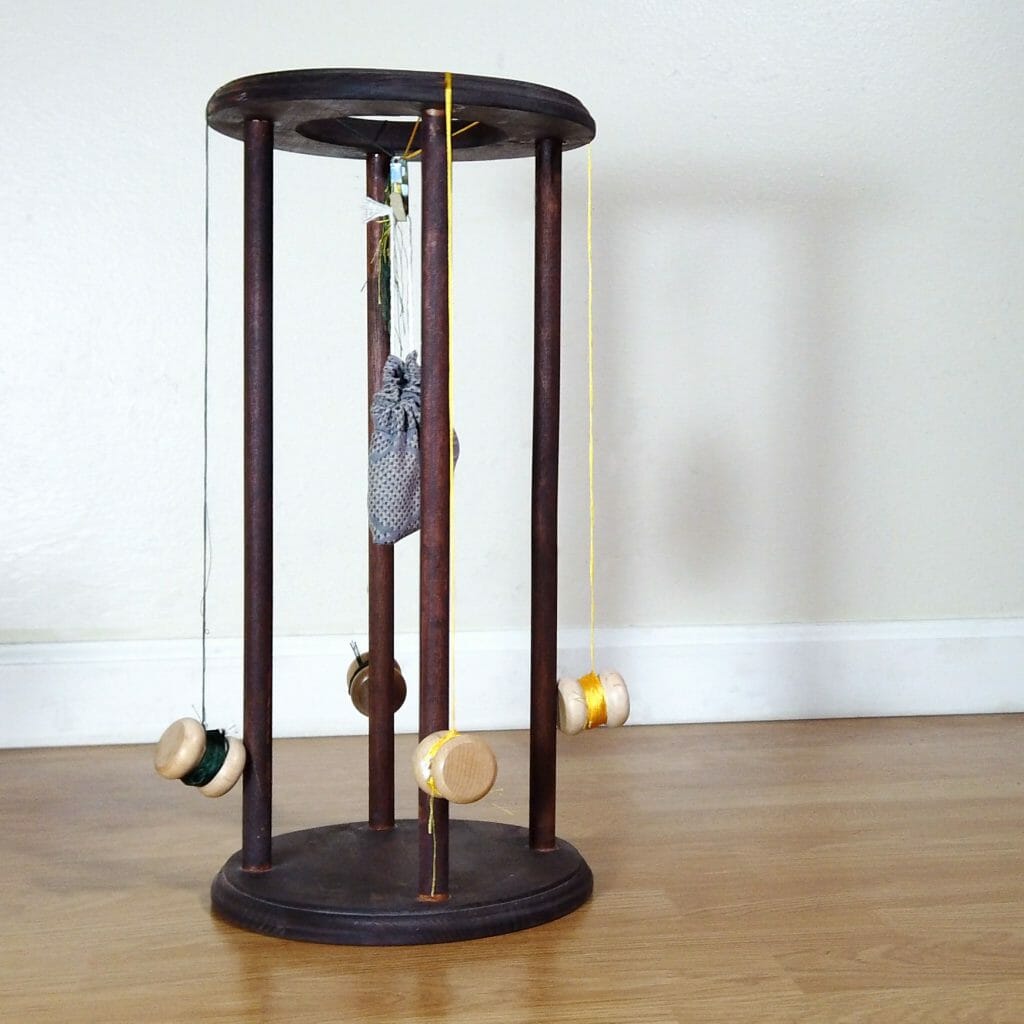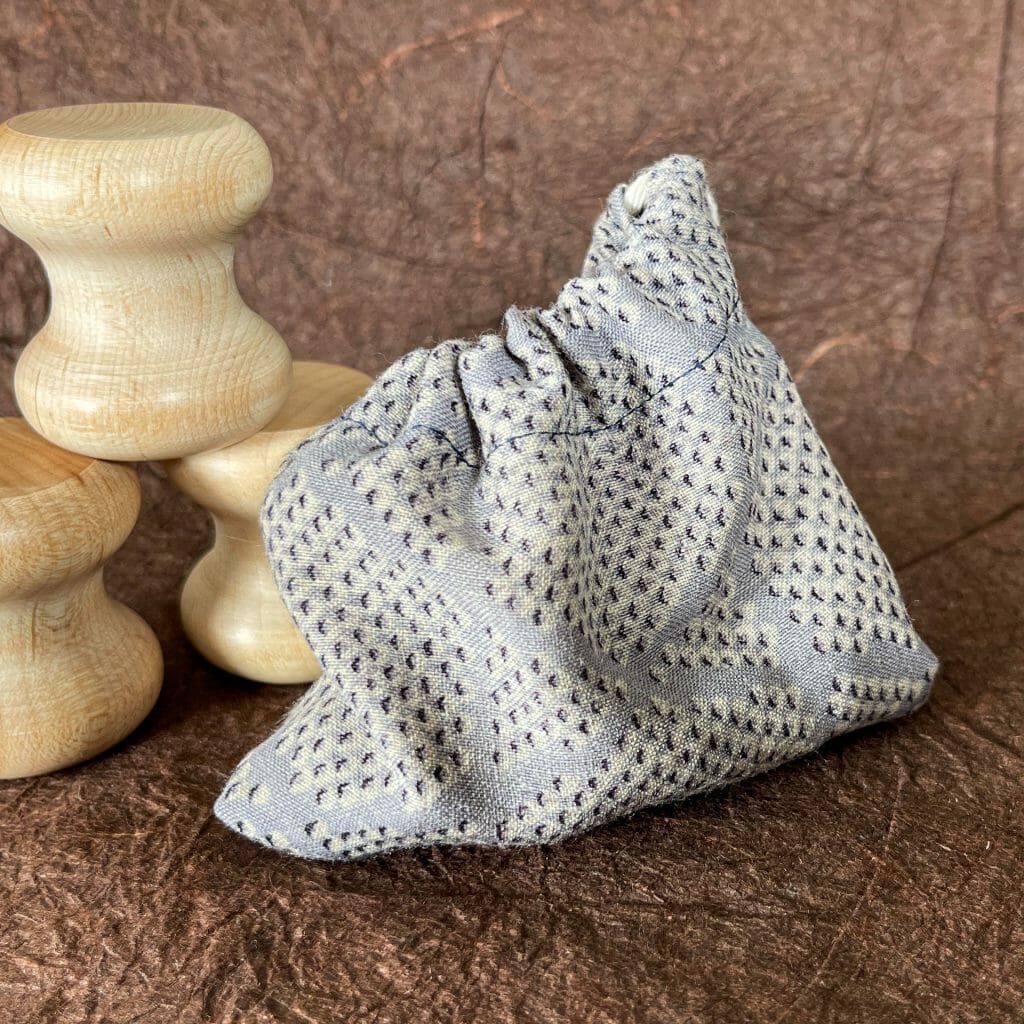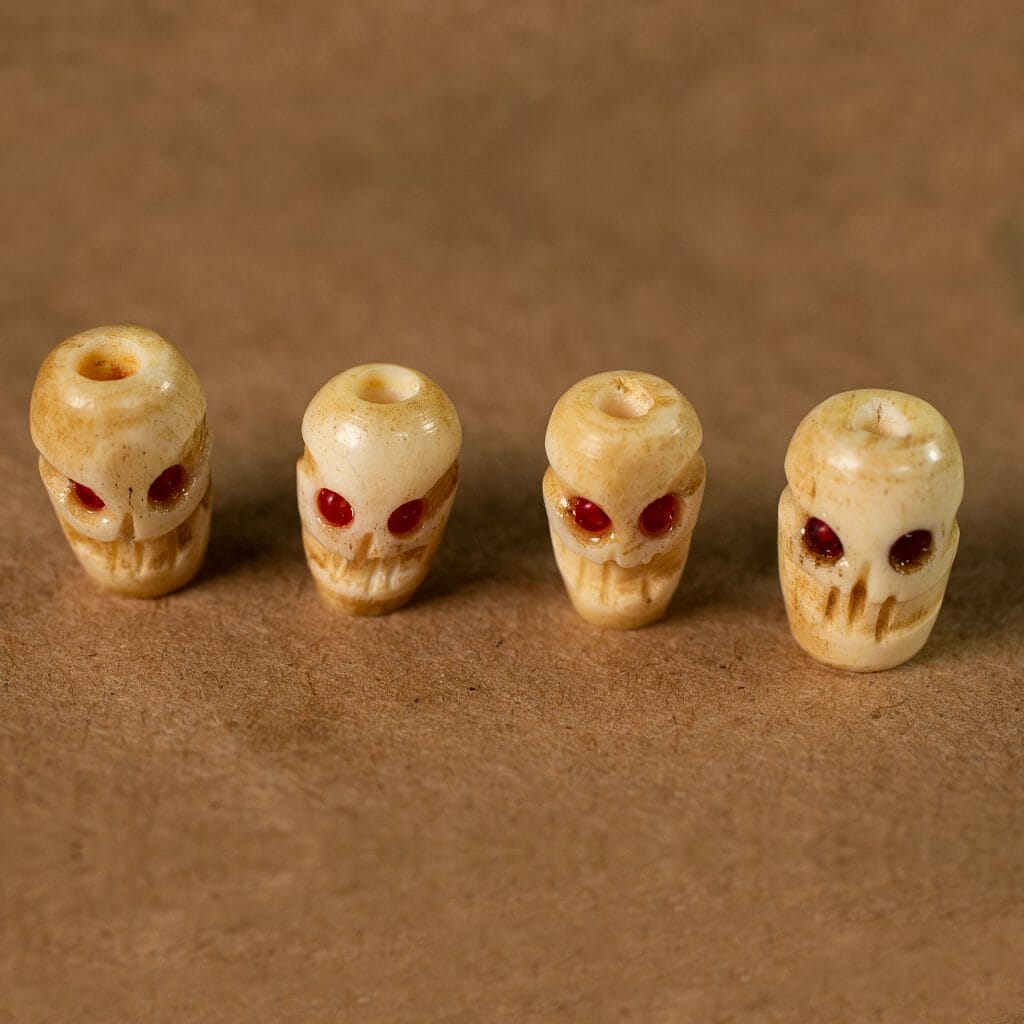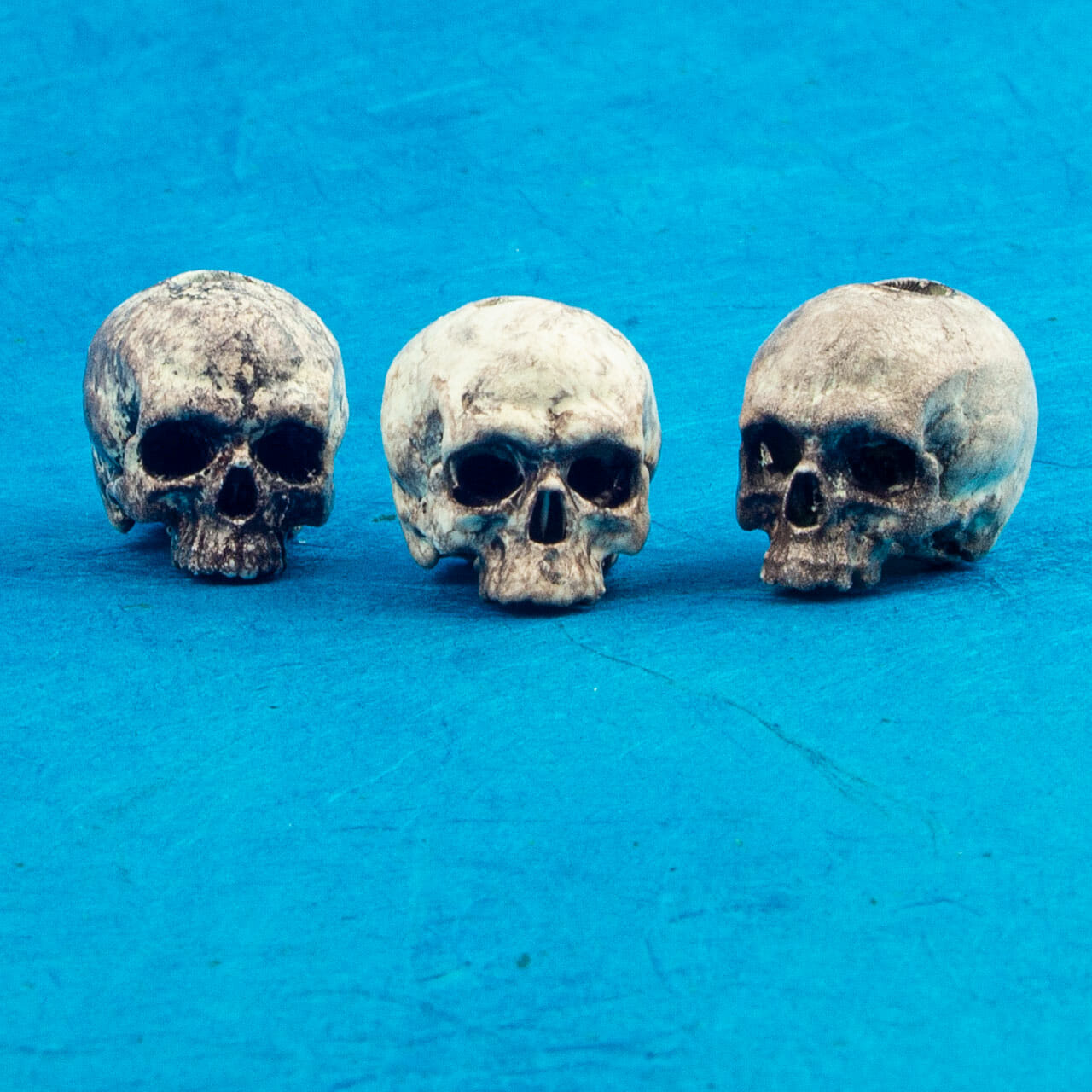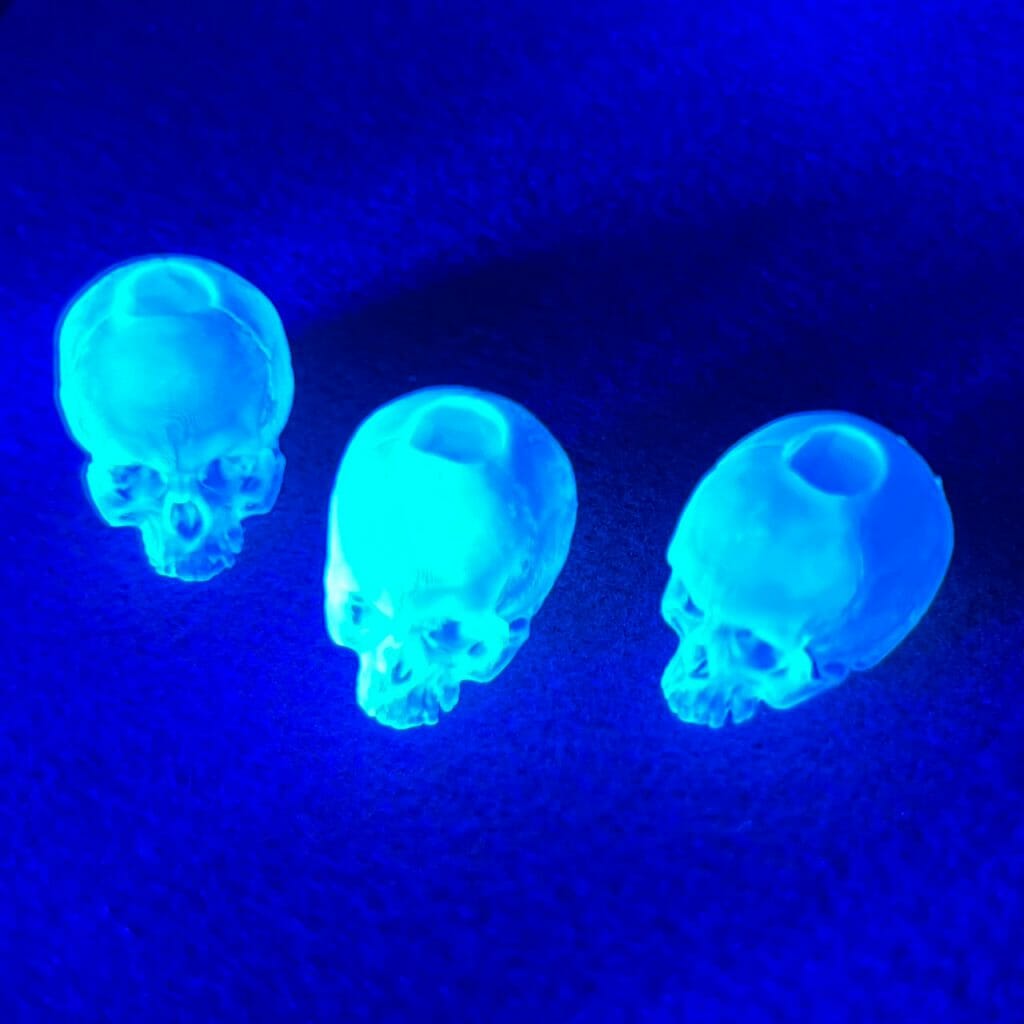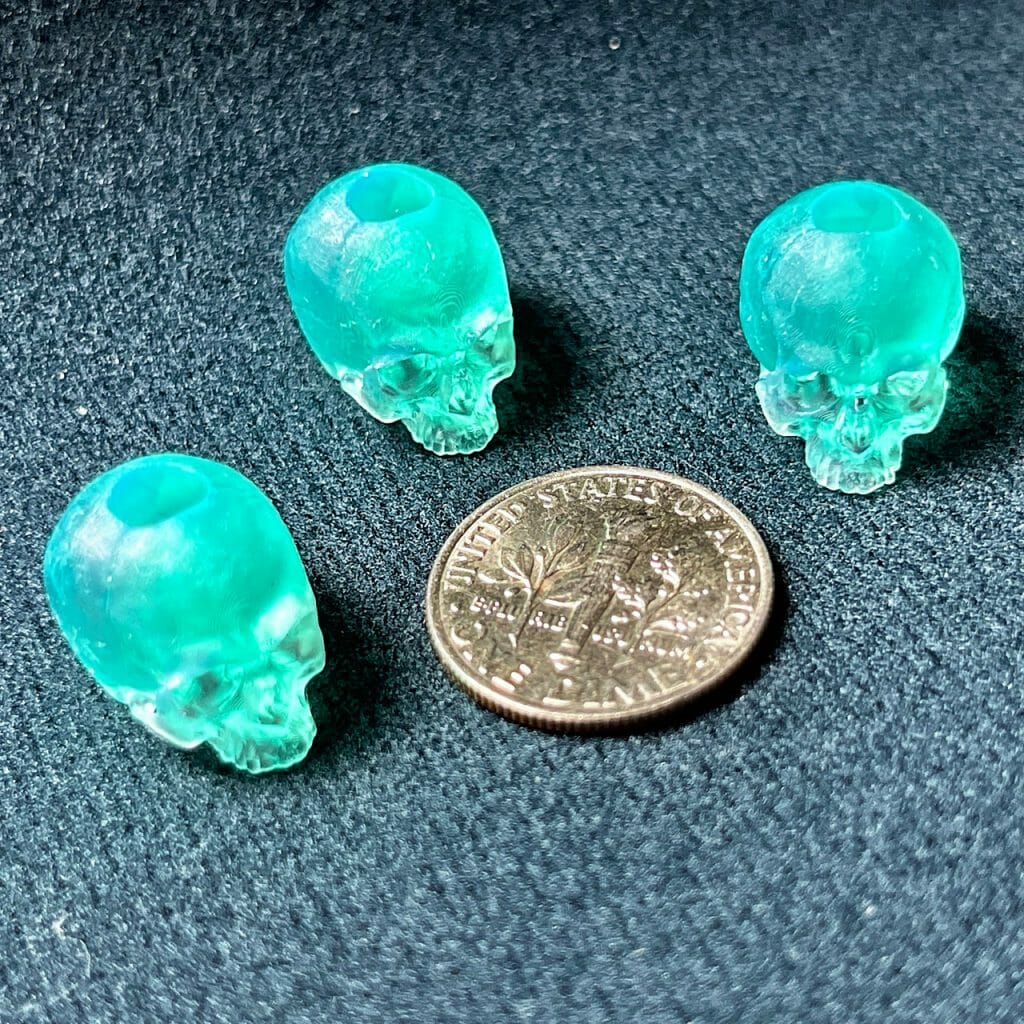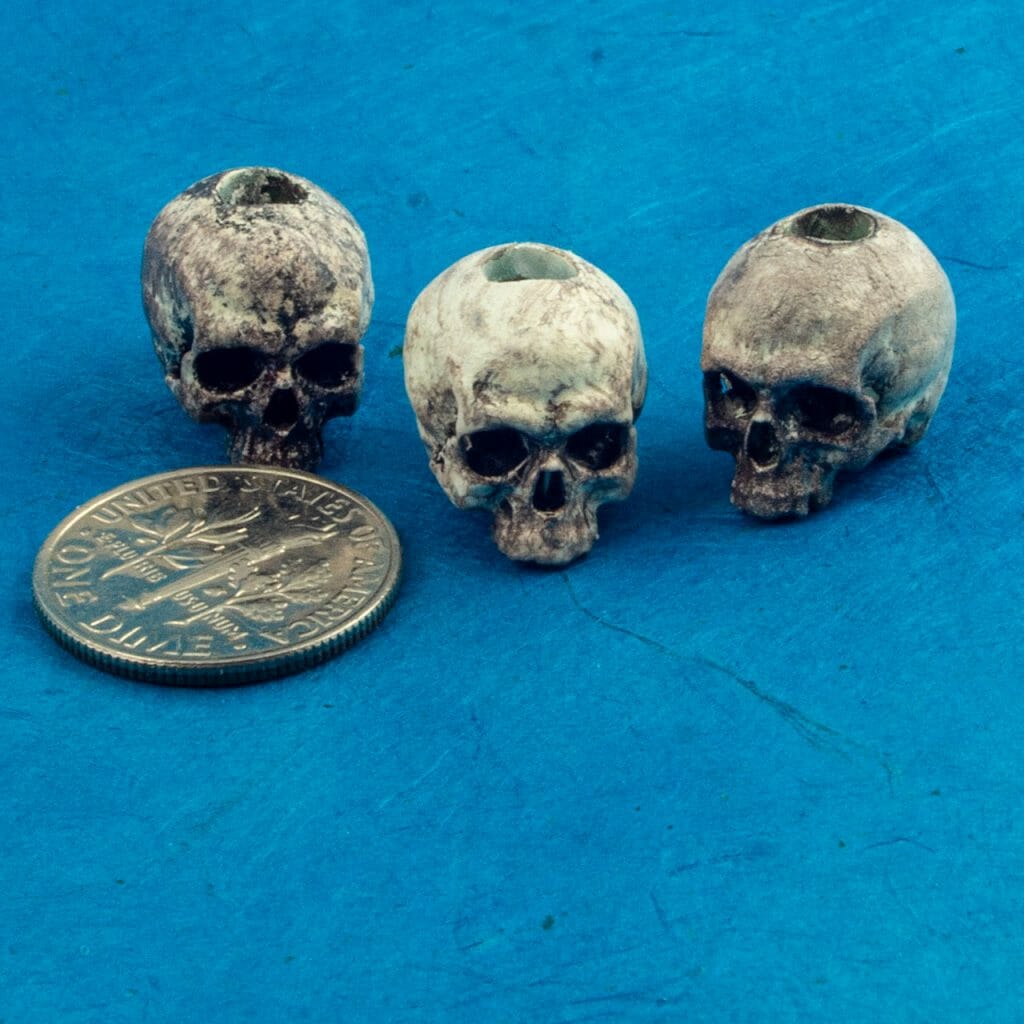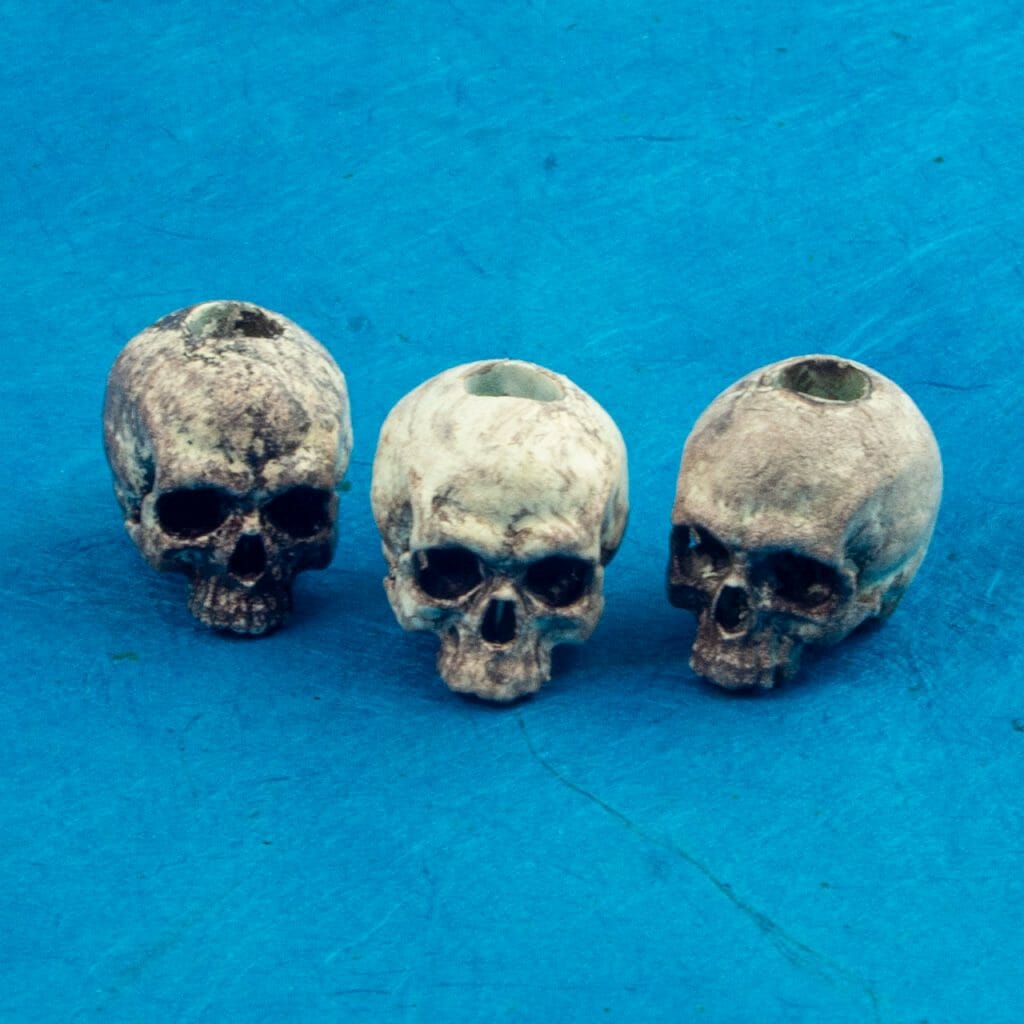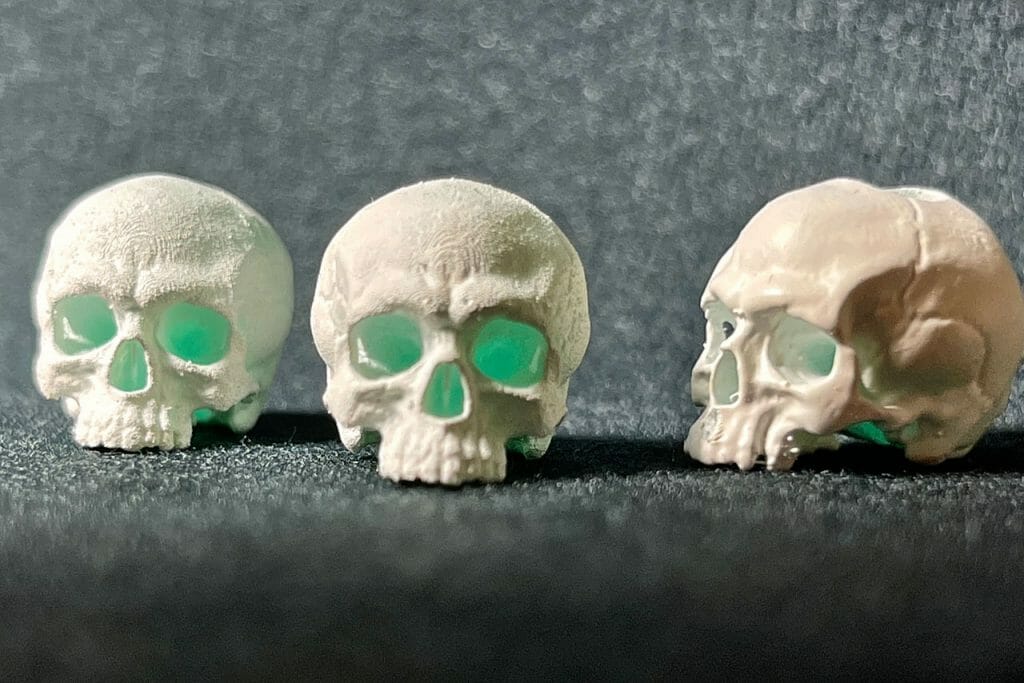D20 Chonks from Scratch
I kept thinking I wanted to get a little more experience with mold making and casting. I have nieces, nephews, and friends who are all playing various tabletop roleplaying games (TTRPGs) like Dungeons & Dragons regularly. Dice would make great gifts for all of those people. I have also been enjoying the work of some of the resin artists I have found making dice. I didn’t really want to do a bunch of resin casting in my home studio, but had become aware of some less-toxic stone-based “eco resin” casting materials like Jesmonite.
Back in March, I started working on making a big 42mm 20-sided die (a D20, in TTRPG parlance). I modeled it in Blender with a font I like (and have properly licensed), and set about 3D printing one from which to make molds. Although I have been knocking out all sorts of perfect models on my resin printer, there were some issues with getting my Anycubic machine to produce a flawless D20. At first, it was mechanical. It took me a bit to realize the plate had worked itself loose in a way apparently isn’t expected, then a bit to get it fixed correctly. Minor issues after that were eventually resolved by choosing the right resin.
From that print and a printed mold form, I made silicone molds, eventually coming up with a slightly-modified cap mold style that seems to work pretty well.
I cast a bunch of dice in Jesmonite, playing with various mixing and pouring techniques, different pigments, and various approaches to keeping bubbles and voids from ruining the casts. I mostly settled on using an old dental vibration table, some tapping and stretching of the filled molds, and a pressure pot for the later.
I have been painting in the numbers with acrylic paint, and finishing by polishing with bees’ wax.
There are a lot more finished dice than I am showing in this post. I haven’t managed to photograph all of them yet. I may add more in the future.
Once I had some big dice, I decided I needed to make some cool gift boxes for them. That’s for another post, though.
I made a video walking through the journey of getting some finished Jemonite chonks:
You can also watch some of them spin in the demo short:

